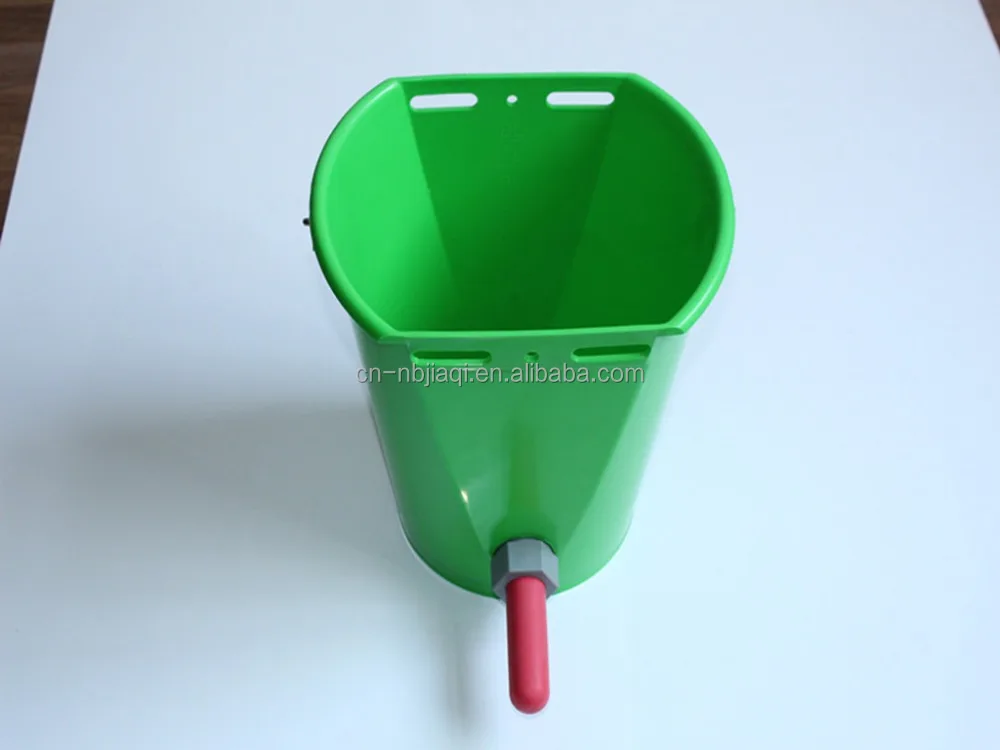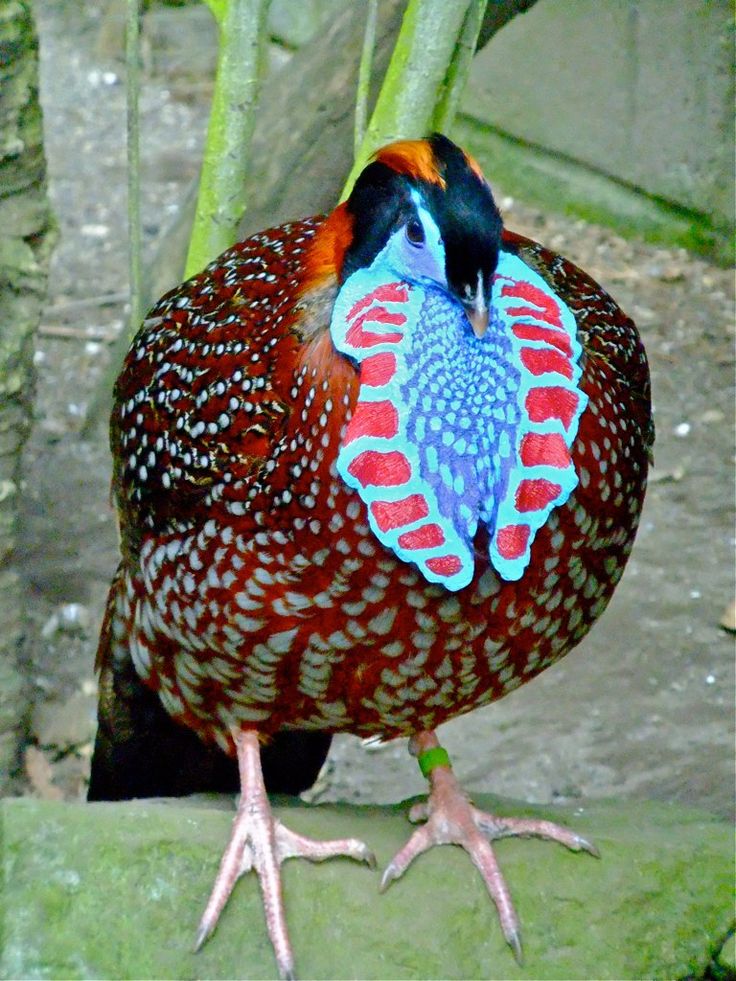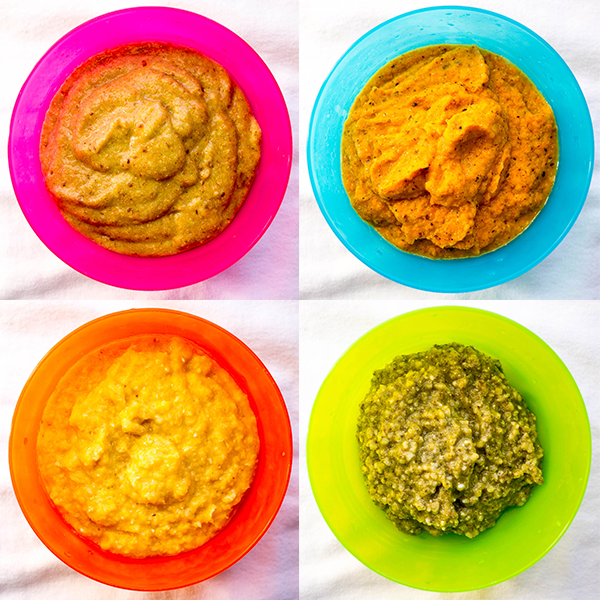Baby calf feeding supplies
Feeding Supplies - Calf - Page 1
Sort By: Featured ItemsNewest ItemsBest SellingA to ZZ to ABy ReviewPrice: AscendingPrice: Descending
-
$65.00 $36.88
Sale! Hanging Green Hay Feeder Metal Basket - 20 inch
-
$8.75
Brush for cleaning MILK BAR™ Calf Nipple
-
$11.
49
Feed Pan - Hot Pink
-
$27.50 $18.95
Blue Nursing Bottle Brush for 3 - 4 quart calf bottles for cordless drill - imported
-
$27.50 $17.95
Blue Nursing Bottle Brush for 2 quart calf bottles for cordless drill - imported
-
$47.
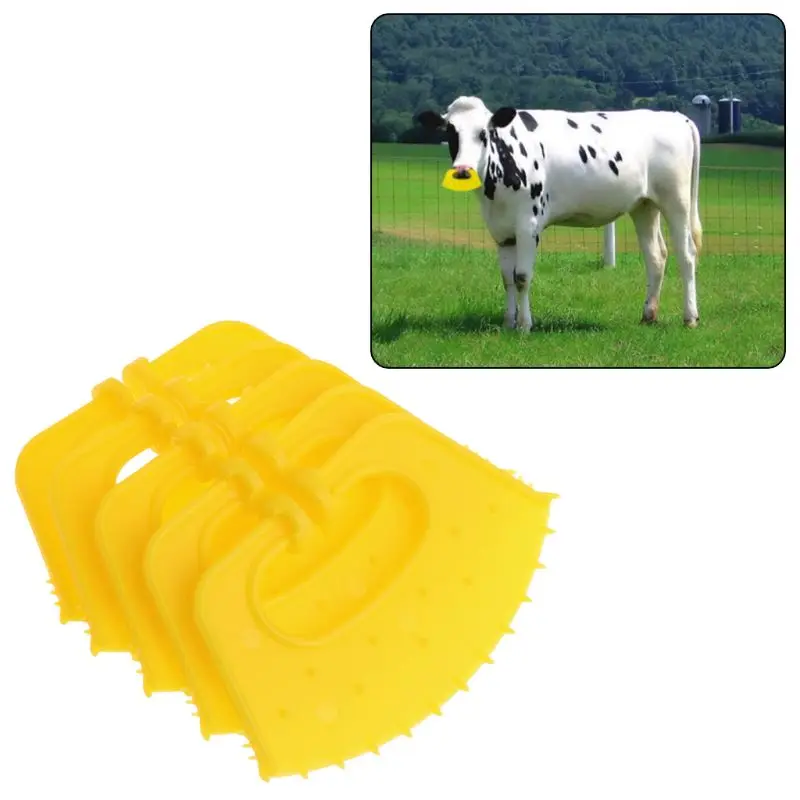 95
95Large Hay Rack - 29 inch - Galvanized
-
$16.88 $14.88
Clearance - Calf bucket Feeder Euro style - with Nipple, Valve, and hanging bracket
-
$159.75
MILK BAR™ Compartment Feeder for 4 Calves
-
$187.
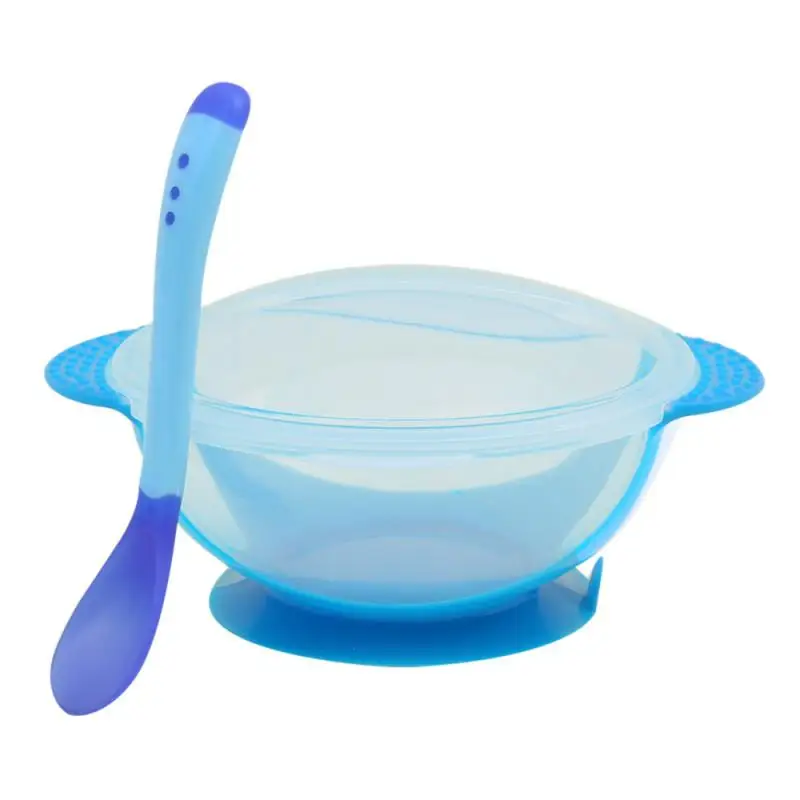 27
27MILK BAR™ Compartment Feeder for 5 Calves
-
$149.90
Milk Bar 3 Compartment Calf Feeder with EZ-Lock
-
$439.99
MILK BAR™ FOR FEEDING 20 CALVES - with base - free standing
-
$19.
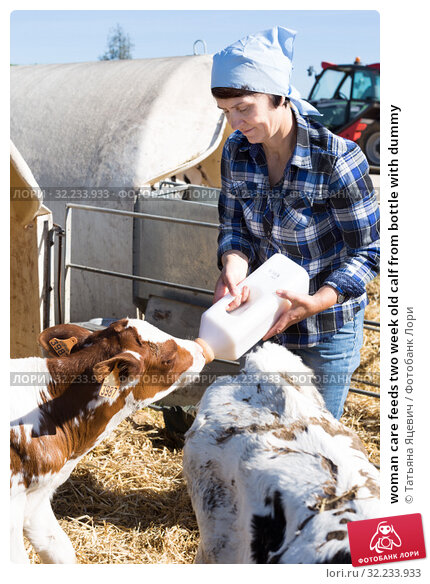 95
95Large Feed Scoop 3 quart aluminum
-
$17.75
Nursing Bottle Brush for 2 quart calf bottles
-
$31.00
Fluidfeeder with Stainless Steel Tube
-
$11.
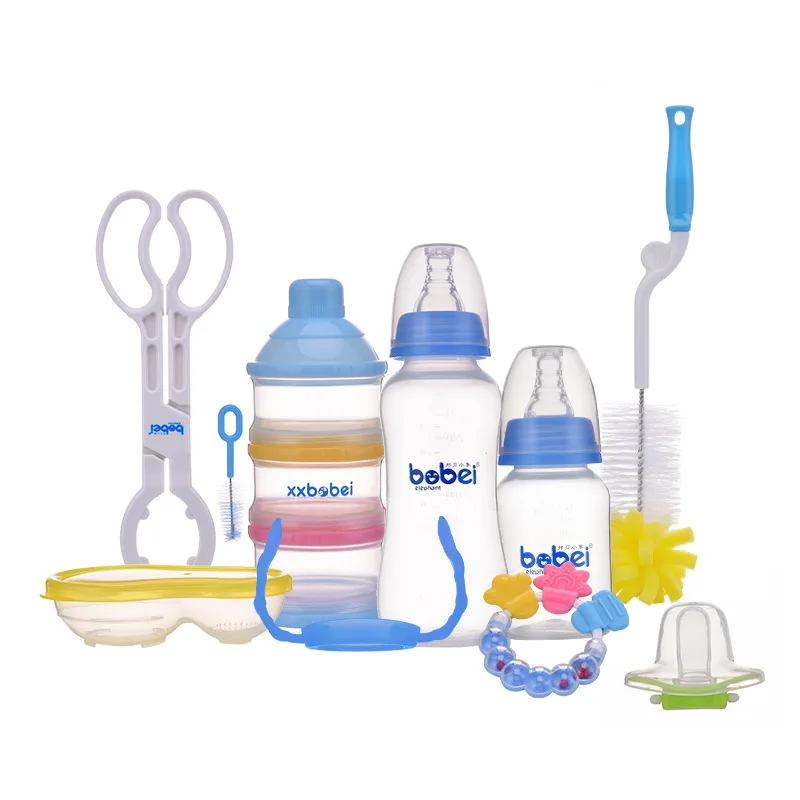 49
49FEED PAN - Red
-
$105.95
MILK BAR™ FOR FEEDING 5 CALVES
-
$14.95
Cover for Kerbl Calf and 9277 Kid Lamb feeder - also fits some Milk Bar feeders
-
$2.
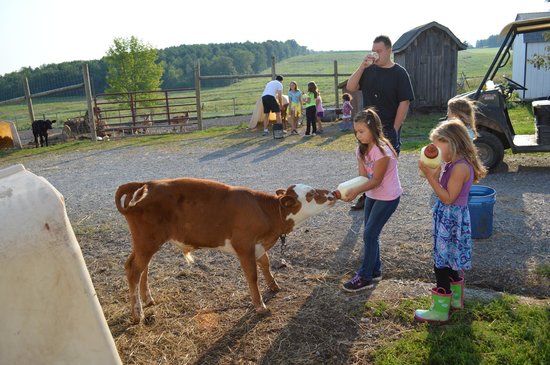 99
99Rhinehart Valve for Calf, Kid & Lamb Feeders
-
$8.55
Drop Pin for Sydell Panel
-
$0.34
Gasket for 9002 Valve
-
$135.
 00
00Large Blue Sydell Hay Rack - 48 inch
-
$1.50
Hanging bracket for 9240 Calf Feeder and 9433 Kid/lamb feeder
-
$12.75
Pop Bottle Brush
-
$10.
 00 $5.00
00 $5.00Replacement tube for Syringe style Drench Gun 32-316
-
$131.00
MILK BAR™ for Feeding 2 Calves with individual compartments
-
$2.50
93SCN Nipple for Little Giant 9312 Nursing Bottle
-
$4.
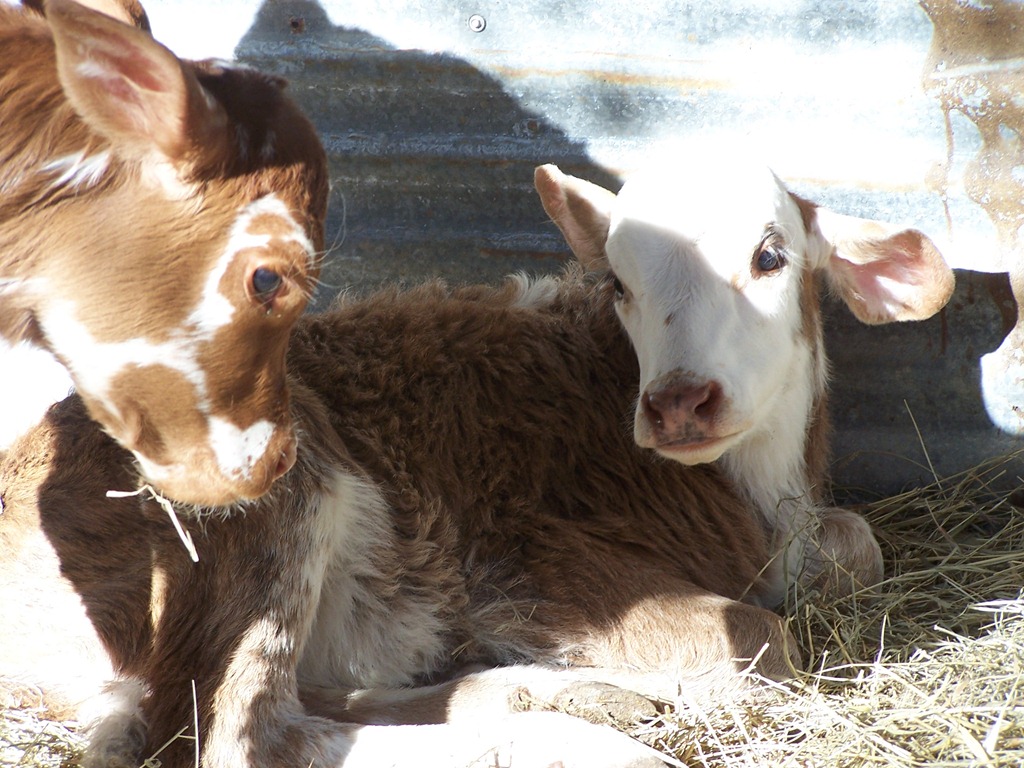 99
99TCR CLIP / SNAP - plastic
-
$4.49
2qt Calf Nursing Bottle with Snap on Nipple
-
$11.05
Nipples for 9240 Calf Feeder (5 pack)
-
$19.
 88
88Calf bucket Feeder with Nipple, Valve, Cover and hanging bracket
-
$330.00
Salt & Mineral Feeder - 2 station - FOB
-
$11.49
Feed Pan - Green
-
$4.
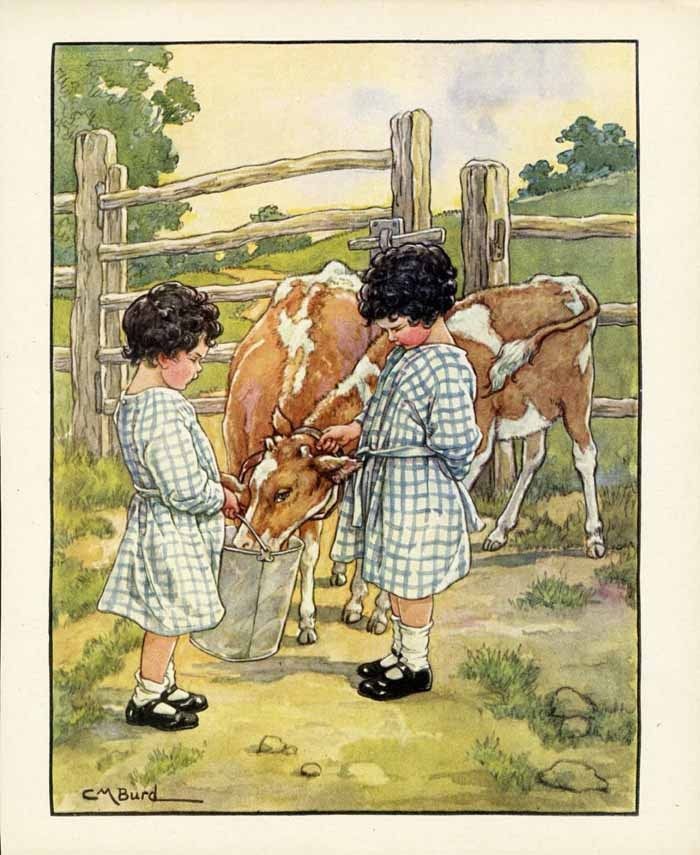 35 $4.25
35 $4.25MILK BAR™ CALF NIPPLE each black
-
$220.00
Small Rotating Mineral Feeder - 1 tub FOB
-
$3.29
Formula 911® - 100gm packet for scours in calves, kids, lambs, foals, pigs, llamas and alpacas
-
$39.
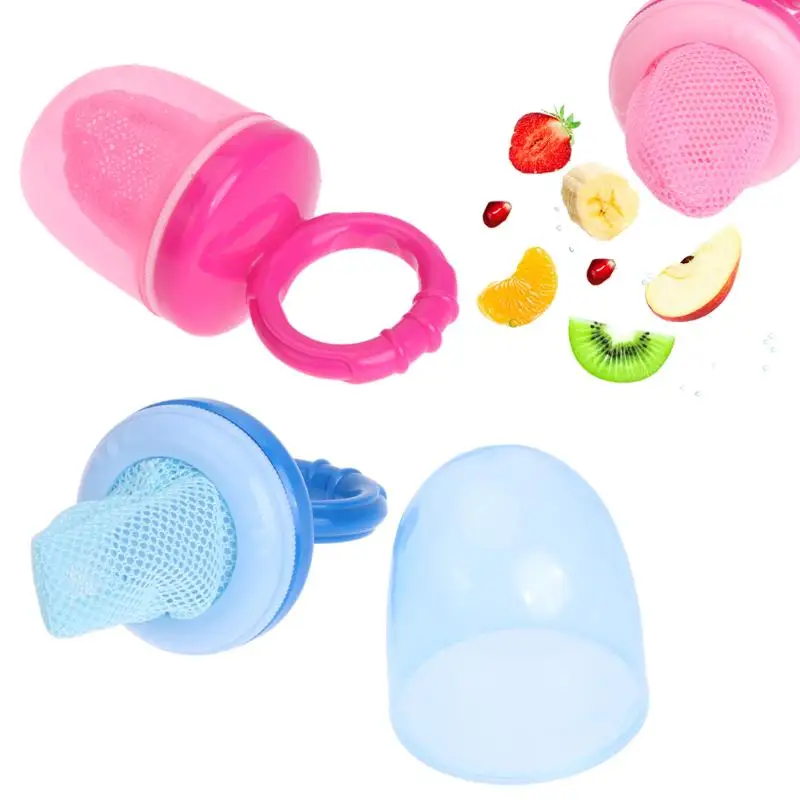 95
95MILK BAR™ FOR FEEDING 1 CALF
-
$27.50 $23.50
Green Nursing Bottle Brush for 2 quart calf bottles for cordless drill - USA
-
$8.00
8 quart poly pail (set of 2)
-
$39.
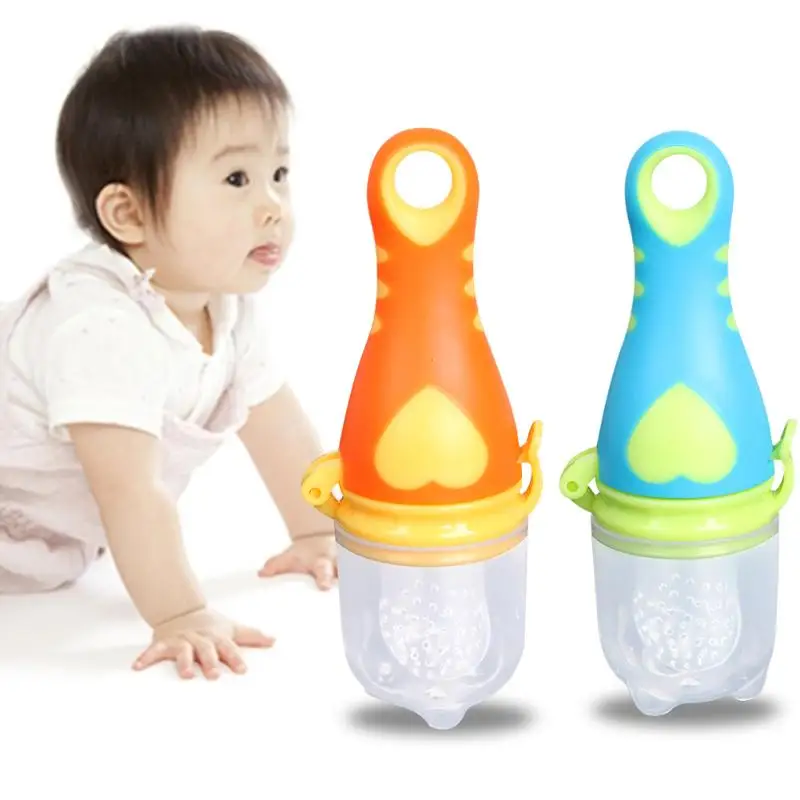 88
88Large Calf Jacket
-
$3.75
Calf Nipple for 9003 Feeder
-
$22.00 $13.88
50 ml Drench Gun Kit - Syringe style 33521
-
$6.
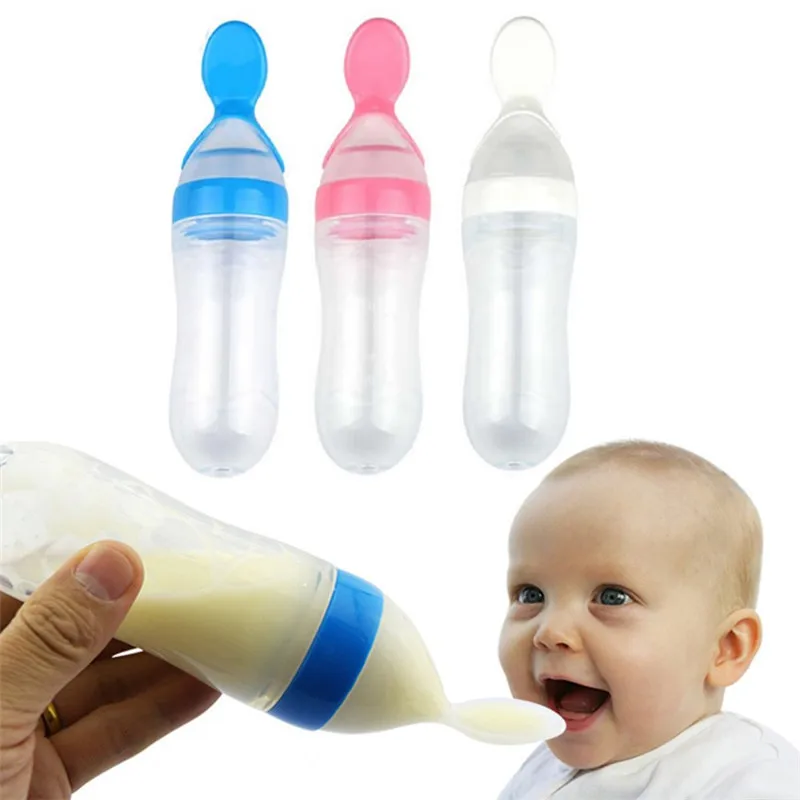 50
50Colostrum Oral Gel for Kids, Lambs, Calves
-
$55.00
Small Blue Sydell Hay Rack - 20 inch
-
$4.45
Replacement Nipple for Braden Start Grain Feeder
-
$3.
 15
15Replacement valve for Euro calf, Kid & Lamb Feeders
-
$350.80
MILK BAR™ FOR FEEDING 12 CALVES with EZ Lock Hooks
-
$8.95
Vitamin E & Selenium Gel - 40 dose tube - All Natural
-
$36.
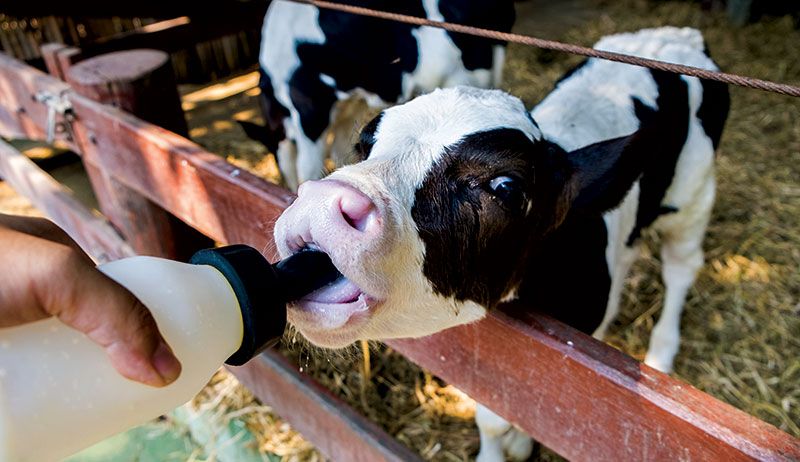 55
55Blue Poly Feeder for Sydell fold up milk stands
Liquid Feed Management | Cornell University College of Veterinary Medicine
Recommendations on how much to feed birth to weaning
Whole Milk
Whole milk can be used to feed baby calves. Calves should be fed daily approximately 10% of their body weight (1 quart of milk weighs 2 pounds). For example, a Holstein calf weighing 90 pounds at birth would be fed 4.5 quarts (9 pints) of milk daily or 2.25 quarts per feeding when fed twice daily. Feeding less milk than this amount results in poor growth due to lack of needed nutrients. Overfeeding and sudden changes in the amount of milk can cause digestive upsets and scouring.
Waste Milk
Waste or mastitic milk can be used to feed calves. Calves should be fed approximately 10% of their body weight (1 quart of milk weighs 2 pounds). Milk from treated cows should only be used to feed calves raised for herd replacements or those kept for eight to 12 weeks after the last feeding of such milk.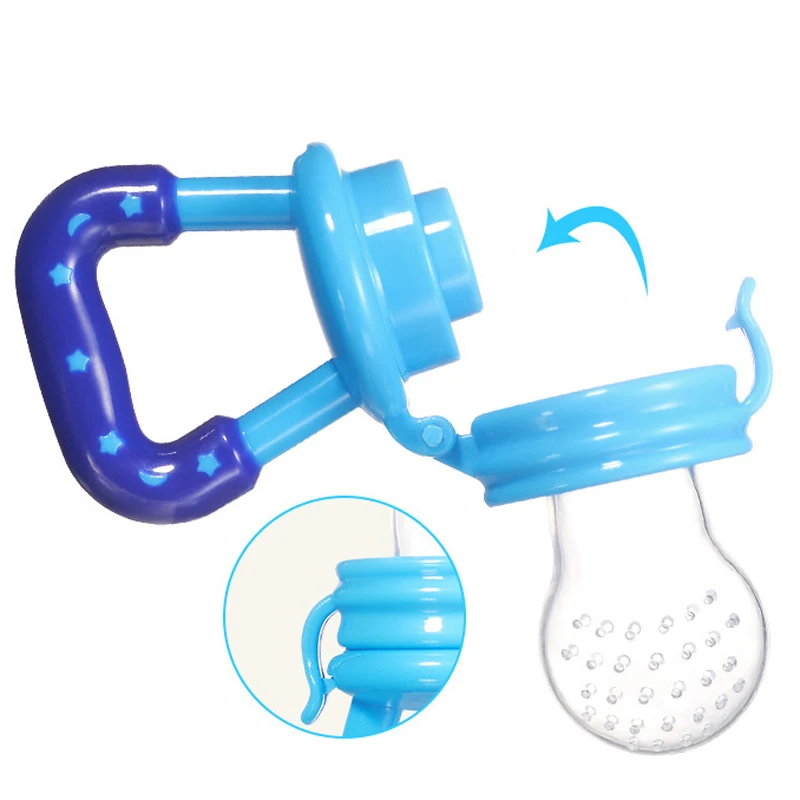 Do not feed waste milk containing antibiotics to calves intended for slaughter. Do not feed calves waste milk that is watery or that comes from quarters showing signs of severe mastitis, from cows with an elevated temperature, from cows that are off-feed, or from cows shortly after they have been treated with antibiotics.
Do not feed waste milk containing antibiotics to calves intended for slaughter. Do not feed calves waste milk that is watery or that comes from quarters showing signs of severe mastitis, from cows with an elevated temperature, from cows that are off-feed, or from cows shortly after they have been treated with antibiotics.
Milk Replacer
Calves should be fed high quality milk replacer containing 28% protein. Start with 1 lb of milk solids (1 gallon) in the first week and gradually increase to 2 lbs/day (2 gallons of milk) in the first 4–5 weeks of age. Gradually decrease the amount offered after the 5th week to avoid weaning stress. At 7 weeks of age, calves should be fed only 0.5 lbs of milk solids (½ gallon of milk). Calves should be weaned when grain intake is approximately 3 lbs/day, which typically occurs at 7–8 weeks of age in the Step method. Maintain calves in the same environment for at least 1 week after weaning. When moving them to group pens at 9–10 weeks of age, most calves should be consuming 4–5 lbs of grain per day.![]()
Milk provides the primary source of feed for young calves before they are able to digest solid feeds. The standard program of feeding pre-weaning calves 1 gallon of milk replacer reconstituted at 12% dry matter is insufficient for optimum development. In this system, the calf consumes approximately 1 lb of milk solids per day, which is sufficient only to meet the need to maintain body weight of a 100-lb calf. Although this system enhances grain intake, it causes calves to have low weight gains in the first month of age.
Calving Ease
January 2001
Sam Leadley (Attica Veterinary Associates) and Pam Sojda (Offhaus Farms)
Cold Weather and Energy for Calves
This month we focus on relatively small calves that are consuming only milk or milk replacer. The chart above shows how many quarts of 20-20 milk replacer (mixed according to the manufacturer’s instructions of eight ounces of powder to make two quarts of mix) are needed for maintenance and growth.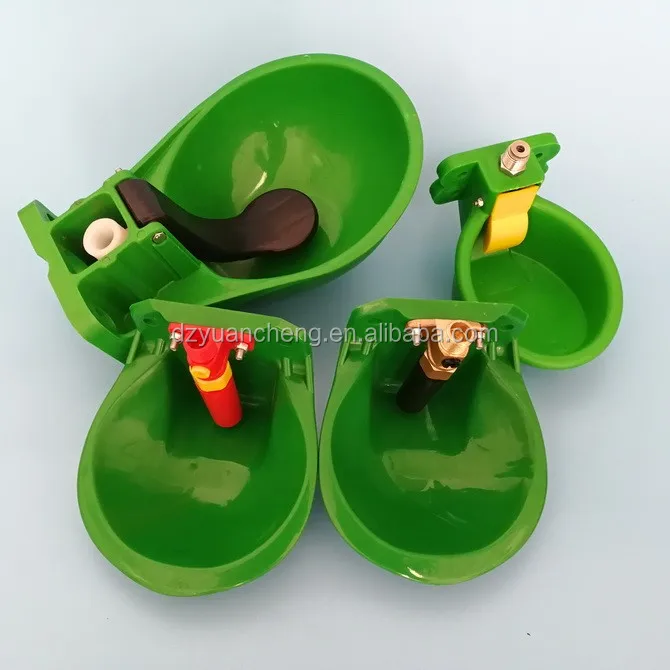 We compared a smaller eighty pound calf to a larger one weighing one hundred pounds. Three different temperatures of the surrounding air are shown as well. The dark horizontal line marks the "usual" amount fed by producers; four quarts daily usually in two feedings.
We compared a smaller eighty pound calf to a larger one weighing one hundred pounds. Three different temperatures of the surrounding air are shown as well. The dark horizontal line marks the "usual" amount fed by producers; four quarts daily usually in two feedings.
First, note that as the air temperature goes down the amount of milk replacer needed for maintenance goes up. The dark part of the bar shows how much is needed for maintenance alone. Three of the dark bars that indicate maintenance needs go above the four-quart line. When fed only four quarts a day these calves are not maintaining their weight. They are losing weight.
Second, notice that for the same air temperature the dark bars are taller for the 100-pound calf than for the 80-pound calf. This means the larger the calf the greater the amount of energy she needs to keep warm, healthy and alive. At 10° the 80-pound calf needs 4.1 quarts and the 100-pound calf needs 4.9 quarts. That’s nearly an extra quart of milk replacer for the larger calf’s maintenance.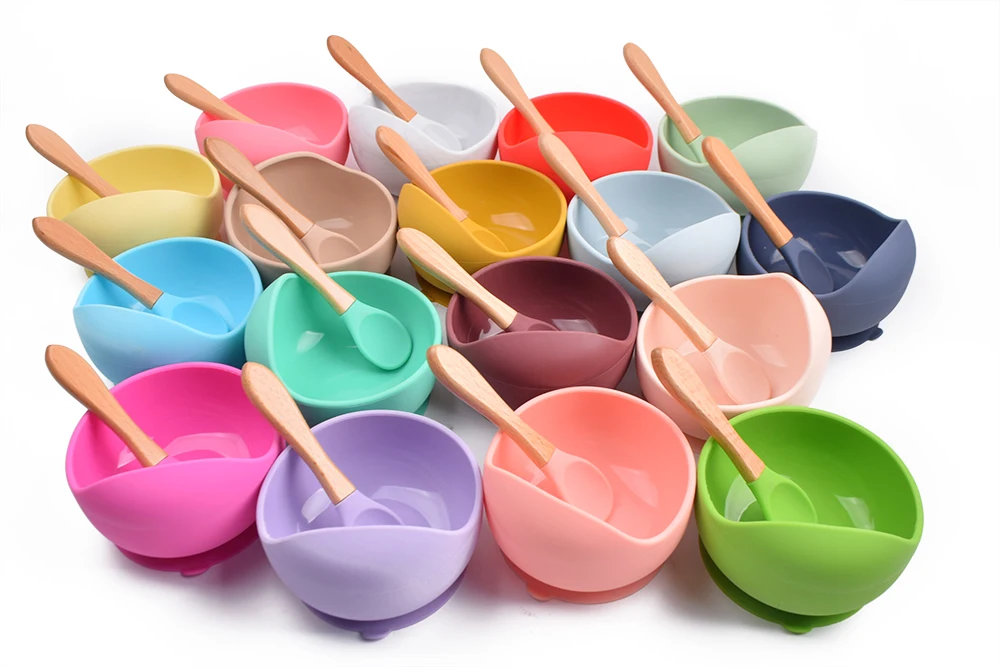
Third, you also want the calf to grow. The white part of each bar represents the number of quarts of milk replacer needed to gain one pound a day. The tops of all six bars are well above the line marking four quarts daily.
How Can I Feed More?
One way is to feed bulk tank milk. Holstein milk has about 25 percent more energy than does 20-20 milk replacer. Jersey milk has about 50 percent more energy. Or, save heifer colostrum and second and third milkings from fresh cows.
Mix this in with your milk replacer to boost the energy inexpensively. Another way is to mix more 20-20 milk replacer powder with the water. Adding two extra ounces of powder per feeding in the same amount of liquid will increase the energy by 25 percent. If the calves have access to water adding an extra four ounces powder per feeding will add 50 percent more energy – but do this only if the calves have free-choice water to drink in addition to their milk.
Another way is to feed more of the standard mix of milk replacer.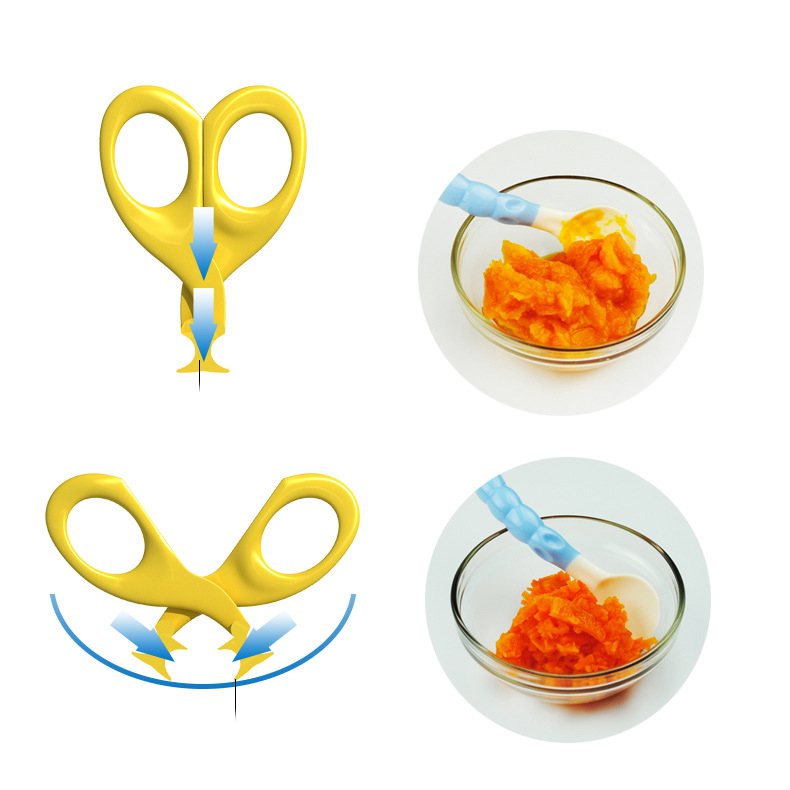 While this option works okay with calves big enough to consume more than four quarts daily it’s not as effective with small calves. Smaller calves tend to eat well one feeding and poorly the next when larger amounts are fed. Also, some producers add commercially prepared fat supplements to boost energy per quart.
While this option works okay with calves big enough to consume more than four quarts daily it’s not as effective with small calves. Smaller calves tend to eat well one feeding and poorly the next when larger amounts are fed. Also, some producers add commercially prepared fat supplements to boost energy per quart.
Spreadsheet Helps Calculate the Cost of Pasteurizing Milk for Calves
A new tool designed to help evaluate the decision to feed pasteurized waste milk is available. This spreadsheet developed by Penn State and Virginia Tech extension educators calculates the cost of owning and operating a calf milk pasteurizer as well as costs to feed milk replacer or whole, saleable milk.
A new tool designed to help evaluate the decision to feed pasteurized waste milk is available. This spreadsheet developed by Penn State and Virginia Tech extension educators calculates the cost of owning and operating a calf milk pasteurizer as well as costs to feed milk replacer or whole, saleable milk. The spreadsheet also compares the nutrients provided by milk replacer, waste milk, and whole milk. All nutrient values can be edited to compare a variety of feeding programs.
The spreadsheet also compares the nutrients provided by milk replacer, waste milk, and whole milk. All nutrient values can be edited to compare a variety of feeding programs.
The spreadsheet calculates costs and nutrients fed, but does not evaluate calf health or growth for each option, because many variables other than nutrient intake affect the actual growth and health performance of calves. Additionally, the spreadsheet offers tables that compare the costs of alternatives to feeding pasteurized milk when the supply of waste milk is not adequate to feed all calves. The final components of the spreadsheet are two simple calculators that estimate the supply of and demand for waste milk and calculate the amount of powder to add to waste milk to increase solids or volume. This spreadsheet can be used when planning for a new pasteurizer and for managing systems already in place.
To download your copy of the Calf Milk Pasteurization Evaluator Spreadsheet, visit das.psu.edu/dairynutrition/calves. A manual with complete instructions and background information is available at the same location.
A manual with complete instructions and background information is available at the same location.
This spreadsheet was designed for you to use your own farm data and specifics related to the feeding system changes that you are proposing. To provide an understanding of what the spreadsheet can do for you, we have put together some examples of some typical situations. Table 1 shows some of the key inputs for two situations. Example 1 is an HTST system that recycles 66% of the heat generated and is shown for an operation with approximately 750 cows. Example 2 is a batch system that can process up to 30 gal/batch and is shown for a farm of about 200 cows.
In both examples, calves will be fed 1 gal/day of pasteurized waste milk, which contains 3.2% true protein and 3.9% fat and is assigned a value of $3/cwt. This will be compared in our examples to milk replacer containing 20% protein and 20% fat fed at 1.25 lb/calf each day, which costs $75 for a 50-lb bag. In Example 1 an electric mixer is used for milk replacer; Example 2 uses hand-mixed milk replacer due to the smaller number of calves fed. Whole milk in both examples is worth $19.40/cwt, contains 3.0% true protein and 3.5% fat, and would be fed to calves at 1 gal/day.
Whole milk in both examples is worth $19.40/cwt, contains 3.0% true protein and 3.5% fat, and would be fed to calves at 1 gal/day.
Table 2 shows the spreadsheet output comparing the nutrients and feed costs of the three feeds in these examples. On a dry matter basis, the waste milk provides more protein and fat than the other options, which would probably result in better growth in calves fed waste milk. A high protein, low fat milk replacer would be more similar to waste milk in the amount of nutrients fed to calves. It is beyond the scope of this spreadsheet to compare growth differences, so growth and health performance of calves are assumed to be equal for the economic comparison. The daily cost of each feed considers the cost on a dry matter basis and the amount of dry matter fed. These values are the same in our two examples. Waste milk is the cheapest of these feeds when its value is set at $3/cwt.
To download the spreadsheet, visit das.psu.edu/dairynutrition/calves. A manual with complete instructions and background information is available at the same location.
A manual with complete instructions and background information is available at the same location.
Considering the cost of pasteurizing milk is the next step. The spreadsheet calculates the cost of owning the equipment (an annual cost that spreads the cost over the life of the machine and considers the amount of interest that could be earned if the money was not tied up in the equipment). The pasteurizer also has operating expenses, including energy costs, cleaning, and extra labor to run the system.
In Example 1, owning and operating the HTST machine adds about $1 per calf to the feed cost (the total cost per day is about $46). Mixing the milk replacer adds $0.18 per calf. So the total daily cost for the 44 calves fed pasteurized waste milk is $1.25 per calf. For the remaining 6 calves, feeding milk replacer would cost $2.06 per calf; feeding whole milk would cost $2.60 per calf (the spreadsheet assumes that whole milk is pasteurized). Looking at this another way (Table 3), the total daily feed cost if all 50 calves were fed milk replacer would be $95. 42. If we fed all 50 calves pasteurized waste milk, the total daily feed cost would be $59.32. Thus, feeding pasteurized milk would save the farm $36.10 per day. However, we don't expect to have enough waste milk to feed all 50 calves. This expectation is based on the spreadsheet's waste milk supply estimator and assumes typical waste milk volumes found in university field studies. The cost of feeding 44 calves pasteurized waste milk and 6 calves milk replacer is $67.25, which still saves $28.16 per day compared to feeding milk replacer to all calves.
42. If we fed all 50 calves pasteurized waste milk, the total daily feed cost would be $59.32. Thus, feeding pasteurized milk would save the farm $36.10 per day. However, we don't expect to have enough waste milk to feed all 50 calves. This expectation is based on the spreadsheet's waste milk supply estimator and assumes typical waste milk volumes found in university field studies. The cost of feeding 44 calves pasteurized waste milk and 6 calves milk replacer is $67.25, which still saves $28.16 per day compared to feeding milk replacer to all calves.
In Example 2, the batch pasteurizer adds $1.55 to $1.70 per calf to the feed cost. The reason for this large increase is the small number of calves being fed on this smaller farm. The total daily cost of the batch pasteurizer is under $25, but that is only spread out over 13 or 15 calves. Hot water used to mix the milk replacer adds $0.01 per calf. So, in this scenario, the total daily cost for the 13 calves fed pasteurized waste milk is $1.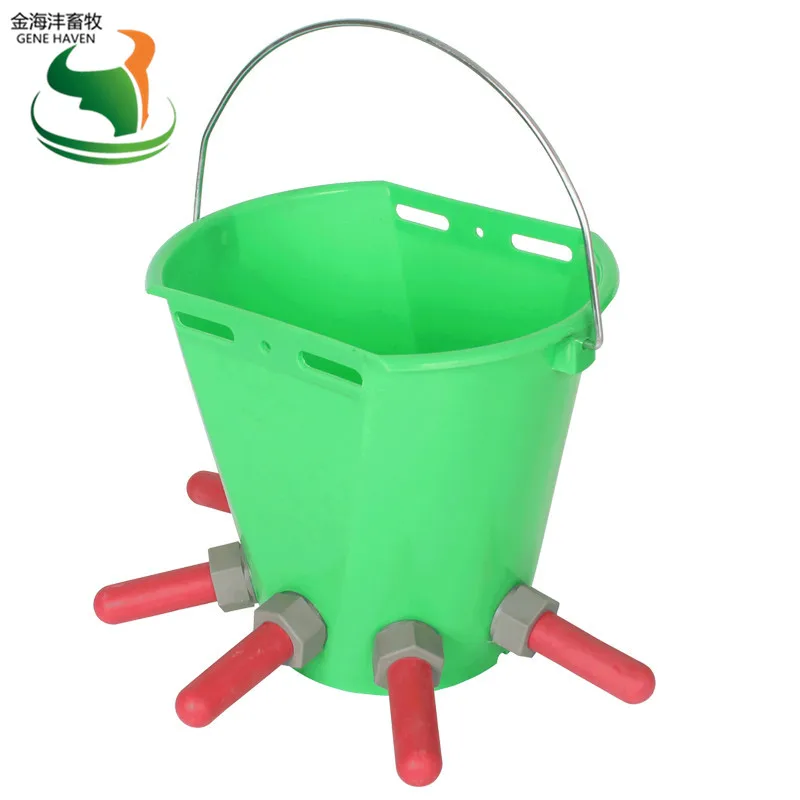 95 per calf. For the remaining 2 calves, feeding milk replacer would cost $1.89 per calf; feeding whole milk would cost $3.22 per calf. As shown in Table 4, the total daily feed cost if all 15 calves were fed milk replacer would be $28.32. If we fed all 15 calves pasteurized waste milk, the total daily feed cost would be $27.14. So in this case, feeding pasteurized milk would save the farm $1.18 per day. But again, we don't expect to have enough milk to feed all 15 calves. The cost of feeding 13 calves pasteurized waste milk and 2 calves milk replacer is $29.19, which costs $0.87 per day more than feeding milk replacer to all calves.
95 per calf. For the remaining 2 calves, feeding milk replacer would cost $1.89 per calf; feeding whole milk would cost $3.22 per calf. As shown in Table 4, the total daily feed cost if all 15 calves were fed milk replacer would be $28.32. If we fed all 15 calves pasteurized waste milk, the total daily feed cost would be $27.14. So in this case, feeding pasteurized milk would save the farm $1.18 per day. But again, we don't expect to have enough milk to feed all 15 calves. The cost of feeding 13 calves pasteurized waste milk and 2 calves milk replacer is $29.19, which costs $0.87 per day more than feeding milk replacer to all calves.
Keep in mind that changes in the number of calves and the supply of waste milk can modify your interpretation of the cost calculation. For instance, the farm in Example 2 may decide that seasonal fluctuations in the number of calves on milk would allow them to more easily justify this purchase.
Making a management change to using a pasteurizer is a complex decision that requires several coordinated changes on the farm. Using a spreadsheet such as this can help you make more informed decisions and may prompt you to think more carefully about what system is best for you.
Using a spreadsheet such as this can help you make more informed decisions and may prompt you to think more carefully about what system is best for you.
Table 1. This is a summary of the detailed input considered in the spreadsheet calculations.
| Example 1 | Example 2 | |
|---|---|---|
| Pasteurizer type | HTST | Batch |
| Purchase price and installation cost | $20,000 | $7,350 |
| Capacity | 600 gal/h | 30 gal in 45 min |
| Energy source | Natural gas | Electricity |
| Energy cost | $1.25 per 100 cubic feet | $0.11/kwh |
| Extra labor | 1 hour@ $8/h | 1 hour @ $8/h |
| Times used per day | 2 | 2 |
| Total calves on milk each day | 50 | 15 |
| Calves fed pasteurized waste milk | 44 | 13 |
Table 2.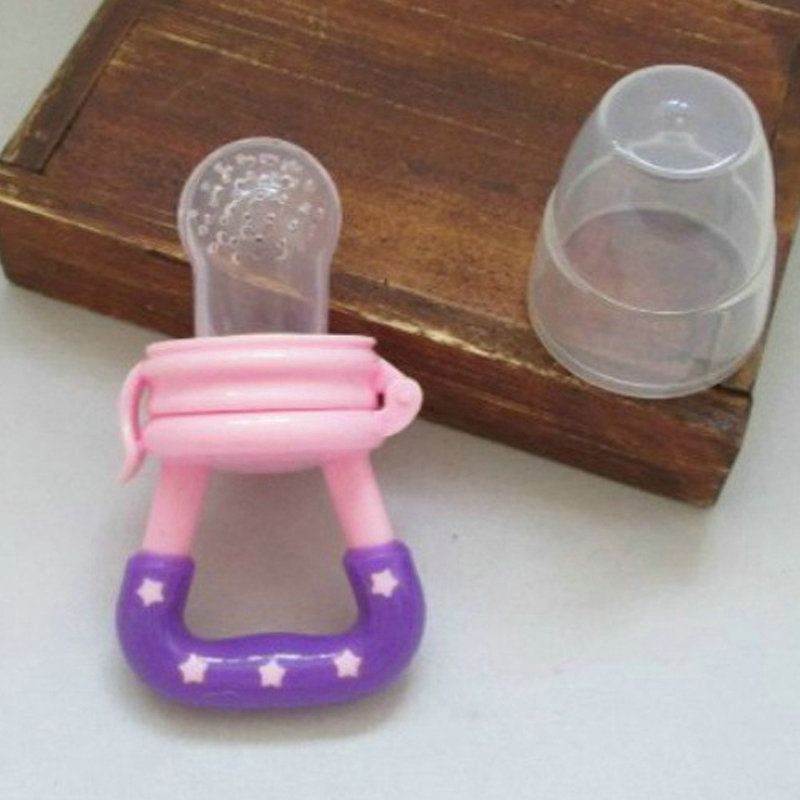 Nutrient and feed cost comparison of liquid feed options
Nutrient and feed cost comparison of liquid feed options
| MILK REPLACER | WASTE MILK | WHOLE MILK | |
|---|---|---|---|
| Crude protein, % dry matter | 20.6 | 26.1 | 25.5 |
| Fat, % dry matter | 20.6 | 30.0 | 28.0 |
| Cost per lb of dry matter | $1.55 | $0.23 | $1.55 |
| Dry matter fed, lb/day | 1.21 | 1.12 | 1.08 |
| Crude protein fed, lb/d (DM) | 0.25 | 0.29 | 0.27 |
| Fat fed, lb/d (DM) | 0.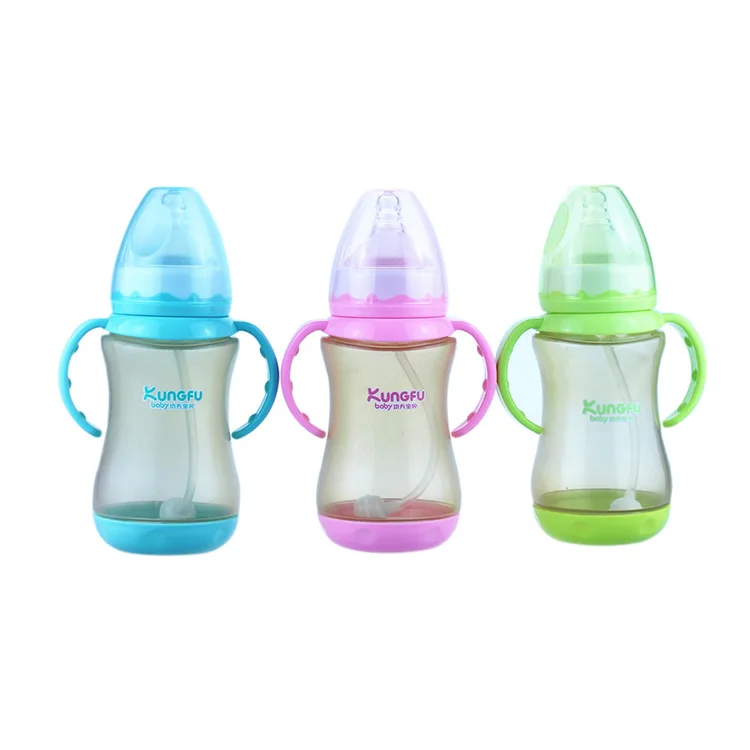 25 25 | 0.34 | 0.30 |
| Daily feed cost, $/calf (DM) | $1.88 | $0.26 | $1.67 |
Table 3. Comparison of various feeding systems, Example 1 HTST pasteurize
| Feeding system | Total cost $/day | Savings or loss compared to feeding all calves milk replacer |
|---|---|---|
| All milk replacer | $95.42 | |
| All pasteurized waste milk | $59.32 | $36.10 |
| Pasteurized waste milk and some milk replacer | $67.25 | $28.16 |
| Pasteurized waste milk and some whole milk | $67.78 | $27.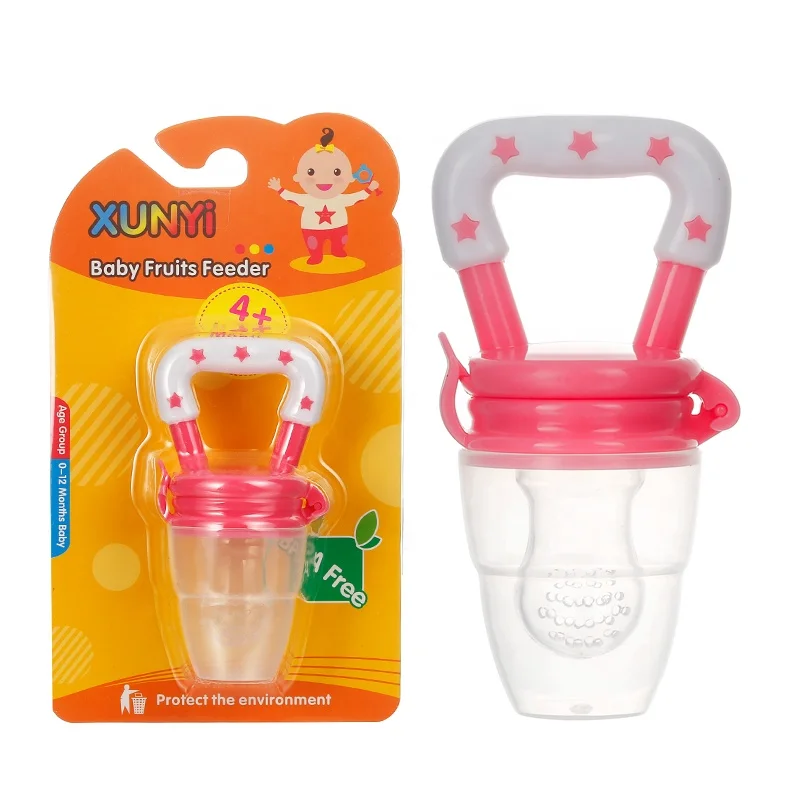 64 64 |
Total of 50 calves; 44 fed waste milk, 6 fed an alternative feed
Table 4. Comparison of various feeding systems, Example 2 batch pasteurizer
| Feeding System | Total Cost $/day | Savings or loss compared to feeding all calves milk replacer |
|---|---|---|
| All milk replacer | $28.32 | |
| All pasteurized waste milk | $27.14 | $1.18 |
| Pasteurized waste milk and some milk replacer | $29.19 | -$0.87 |
| Pasteurized waste milk and some whole milk | $29.96 | -$1.64 |
Total of 15 calves; 13 fed waste milk, 2 fed an alternative feed Coleen Jones, Research Associate Jud Heinrichs, Professor of Dairy and Animal Science Department of Dairy and Animal Science
Feed More as the Weather Gets Colder, Or, Seasonally Adjusted Nutrient Intake
Regardless of your growth goals, if you were achieving these goals during the summer and you continue the same feeding program as the weather gets colder you will not see the same level of success. So, what to do now fall months are upon us?
So, what to do now fall months are upon us?
What is "colder?"
Use the sweatshirt test. Do you need to wear a sweatshirt when working with the calves before 8:00 AM? For most of us that means it is in the 60’s. The bottom of the thermoneutral zone for young (less than three weeks old) calves is about 60°F.
Below 60° these young calves use body stores of energy to maintain their core body temperature. Older calves are another management group. The bottom of their thermoneutral zone is close to 40°. And, their ration is usually both milk and calf starter grain. In the area where I live nighttime temperatures regularly fall below 60° starting in mid-September and continue through May. Average daily temperatures for the Rochester, New York, weather station in 2006-7 were below 60° for close to 245 days. For a rough approximation of your climate use this URL http://www.engr.udayton.edu/weather/citylistUS.htm.
How does cold weather affect the amount to feed?
For calves more than three weeks old and eating calf starter grain the answer is simple.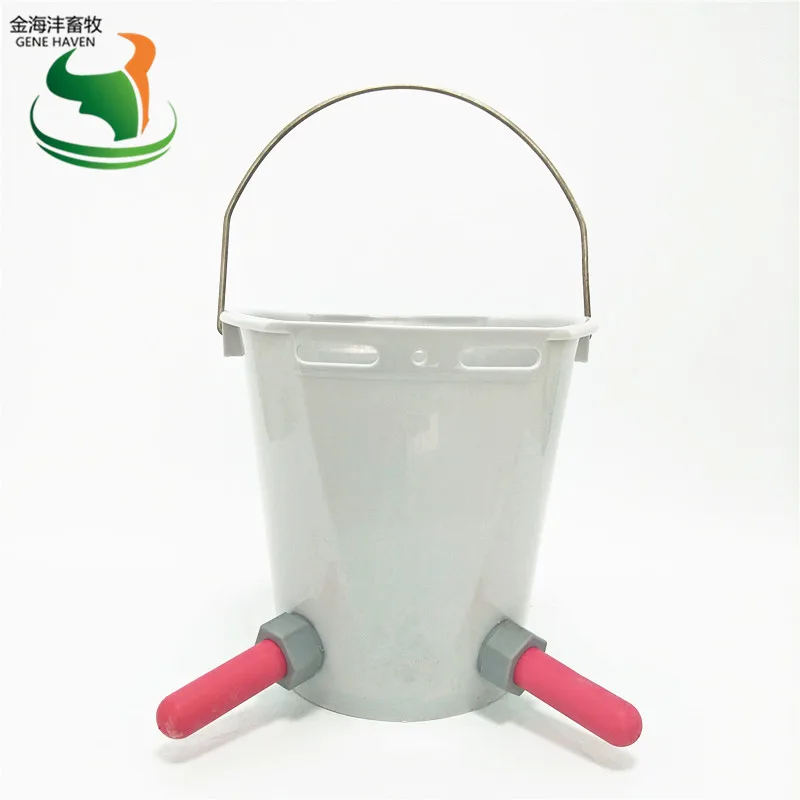 Provide free choice water and calf starter grain. Assuming that you are feeding at least one pound of milk replacer powder or four quarts of whole milk daily, the calf starter grain often doubles or even triples the amount of energy available for growth beyond maintenance requirements. It is straightforward. Grain and water. Everyday even when the weather is below freezing. All they want to eat and drink. It is a real chicken: egg relationship. Water intake drives grain consumption. Grain intake drives water consumption. For young calves that depend on milk or milk replacer for both energy and protein the answer is nearly as simple. Colder weather requires more dry matter intake to achieve the same growth goals compared to "summer" weather.
Provide free choice water and calf starter grain. Assuming that you are feeding at least one pound of milk replacer powder or four quarts of whole milk daily, the calf starter grain often doubles or even triples the amount of energy available for growth beyond maintenance requirements. It is straightforward. Grain and water. Everyday even when the weather is below freezing. All they want to eat and drink. It is a real chicken: egg relationship. Water intake drives grain consumption. Grain intake drives water consumption. For young calves that depend on milk or milk replacer for both energy and protein the answer is nearly as simple. Colder weather requires more dry matter intake to achieve the same growth goals compared to "summer" weather.
How much is "more?"
The amount of milk replacer or milk dry matter required to meet the maintenance requirements of calves at varying temperatures. The calculations assume 2.45 mcal ME per lb. dry matter.
| Bodyweight (pounds) | 68°F | 50°F | 32°F | 15°F | 5°F | -5°F | -20°F |
|---|---|---|---|---|---|---|---|
| 60 lbs | 0. 6 6 | 0.8 | 0.9 | 1.0 | 1.1 | 1.2 | 1.4 |
| 80 lbs | 0.8 | 0.9 | 1.1 | 1.3 | 1.4 | 1.5 | 1.7 |
| 100 lbs | 1.0 | 1.1 | 1.3 | 1.6 | 1.7 | 1.8 | 2.0 |
| 120 lbs | 1.1 | 1.3 | 1.5 | 1.7 | 1.9 | 2.0 | 2.3 |
Note that the values in the body of the table are dry matter, not as-fed liquid. This table is all about maintenance needs. So, let’s look at a 100 pound calf at 50 degrees. The table value is 1.1 pounds of dry matter needed just for maintenance. That is equivalent to 8.8 pounds of milk or milk replacer as-fed (assumes 12.5 percent dry matter – average value for tank milk and milk replacer mixed 0.5 pound powder makes two quarts). That is about 4.25 quarts. My example 100 pound calf could be between five to fifteen days old. She is eating very little calf starter grain. She is depending almost entirely on milk or milk replacer for both energy and protein.
The table value is 1.1 pounds of dry matter needed just for maintenance. That is equivalent to 8.8 pounds of milk or milk replacer as-fed (assumes 12.5 percent dry matter – average value for tank milk and milk replacer mixed 0.5 pound powder makes two quarts). That is about 4.25 quarts. My example 100 pound calf could be between five to fifteen days old. She is eating very little calf starter grain. She is depending almost entirely on milk or milk replacer for both energy and protein.
As long as the weather stays warm she may very well stay healthy until her grain intake comes up to supply nutrients needed for growing. What if she is unlucky and is born in late fall or winter? If we fail to feed enough to meet both maintenance and growth needs there is a good chance she will get sick during those critical first three weeks of life. If you want to do some calculations for your calves to provide for maintenance and one pound of gain per day, just add 0.5 pounds of dry matter to the table values.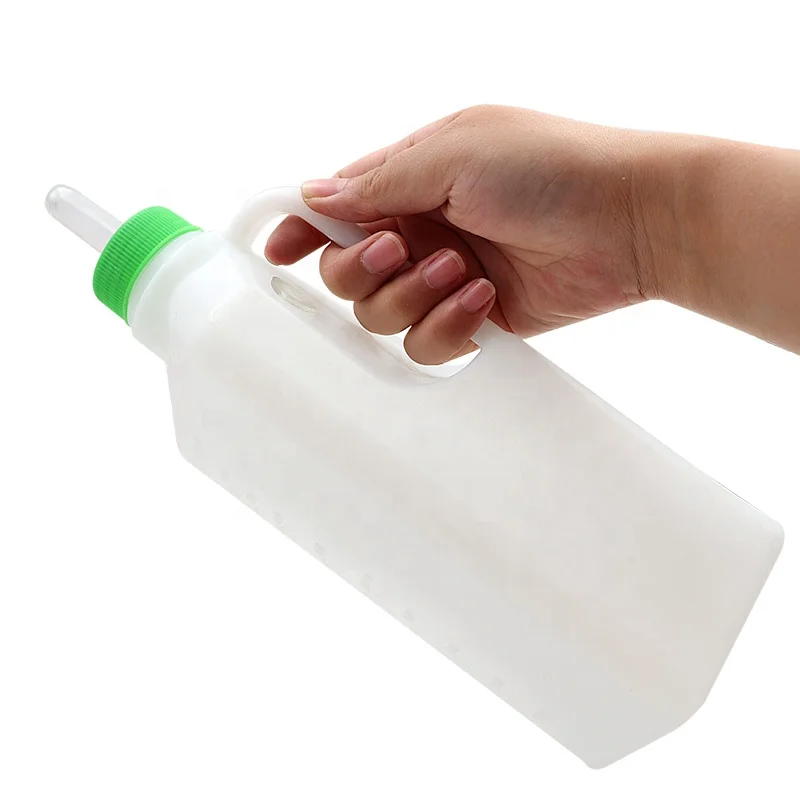 Thus, for the example 100 pound calf at 50 degrees the required dry matter intake for both maintenance and growth increases from 1.1 to 1.6 pounds or 6 quarts as-fed milk per day.
Thus, for the example 100 pound calf at 50 degrees the required dry matter intake for both maintenance and growth increases from 1.1 to 1.6 pounds or 6 quarts as-fed milk per day.
Feeding strategies for cold weather are discussed in several resources. If you go to the Internet site www.atticacows.com check on Calf Facts.
6/09 Calf Connection: Water: Essential Element for Profitability
By Sam Leadley, DairyBusiness www.dairybusiness.com
What’s "normal" water intake? When water is offered free choice to calves starting the second day of life, we expect three major factors to influence consumption:
- Individual animal variation
- The greater the amount of milk or milk replacer fed, the lower the level of water intake
- The higher the environmental temperature, the higher the level of water intake
On one hand, individual calf variation is a huge factor. You probably have had a calf that started drinking water at day two.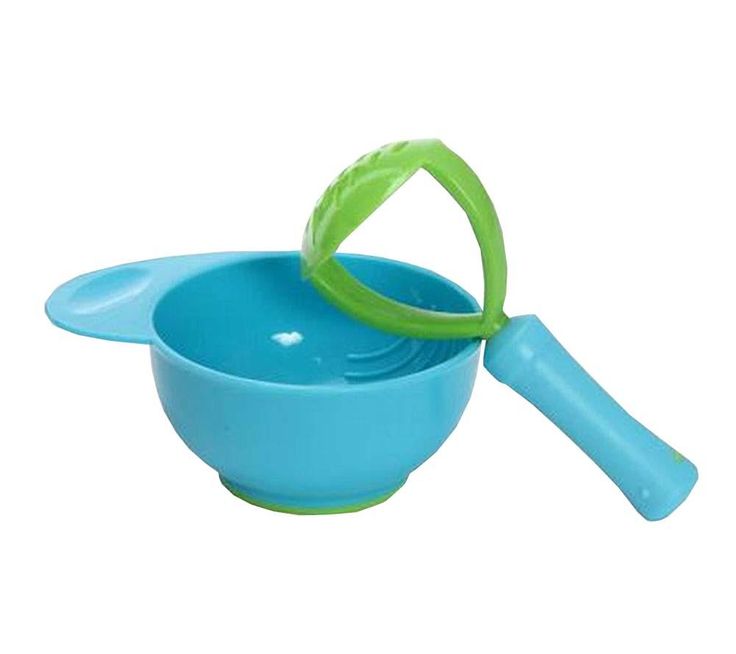 Or remember the calf that would not touch water until you drastically cut back the milk or milk replacer? One study found that even though the average amount drunk was 2.4 quarts daily, the individual variation was from none to 19 quarts. So much for “normal.”
Or remember the calf that would not touch water until you drastically cut back the milk or milk replacer? One study found that even though the average amount drunk was 2.4 quarts daily, the individual variation was from none to 19 quarts. So much for “normal.”
On the other hand, probably at least two-thirds or even three-quarters of our calves do fit a pattern. During week one there may be minimal consumption. By week three, many calves offered free choice water are regularly drinking at least one quart daily.
One study feeding acidified milk replacer free-choice found that calves would drink a lot of milk and very little water. At 7 weeks calves were up to 13.6 quarts of milk replacer daily and less than 1 quart of water. For those of us manually feeding calves, the difference between 4 and 6 quarts a day probably won’t have much effect on water consumption. With calves in cold housing, we’ve all observed how low water intakes fall during subfreezing weather. Jim Quigley, director of calf operations for American Protein Corp.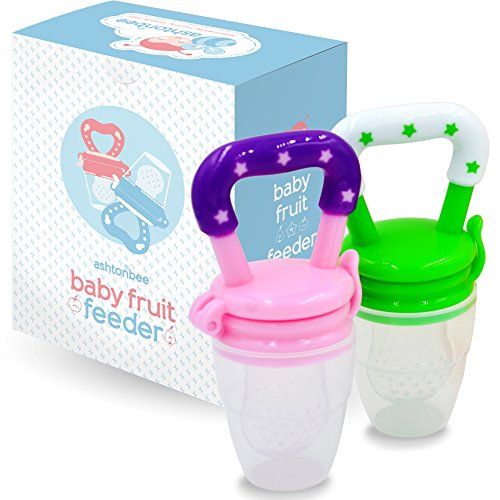 , measured water intake with air temperatures between 32 and 95 degrees (See www.calfnotes.com Calfnote #68). An 18-degree change in temperature from 32 to 50 degrees increased water intake by about 0.4 quarts daily. But a much smaller, 9-degree change from 86 to 95 degrees increased intake 0.5 quarts daily. Increases at higher temperatures mean drastically greater increases in water needs than similar temperature changes when it is cool.
, measured water intake with air temperatures between 32 and 95 degrees (See www.calfnotes.com Calfnote #68). An 18-degree change in temperature from 32 to 50 degrees increased water intake by about 0.4 quarts daily. But a much smaller, 9-degree change from 86 to 95 degrees increased intake 0.5 quarts daily. Increases at higher temperatures mean drastically greater increases in water needs than similar temperature changes when it is cool.
Clean water in clean pails
One common challenge is regularly providing clean liquid water in clean pails. A research project measured the effect of the availability of clean water on growth rate. Researchers assumed that calves would drink more water if it was fresh and in a clean container. For preweaned and transition calves they varied the interval at which the water pails were rinsed and cleaned.
In both instances the researchers measured 0.2 pounds per day difference between clean and "not so clean" water. This supports their assumption that fresh, clean water in clean pails and tubs promotes higher growth rates.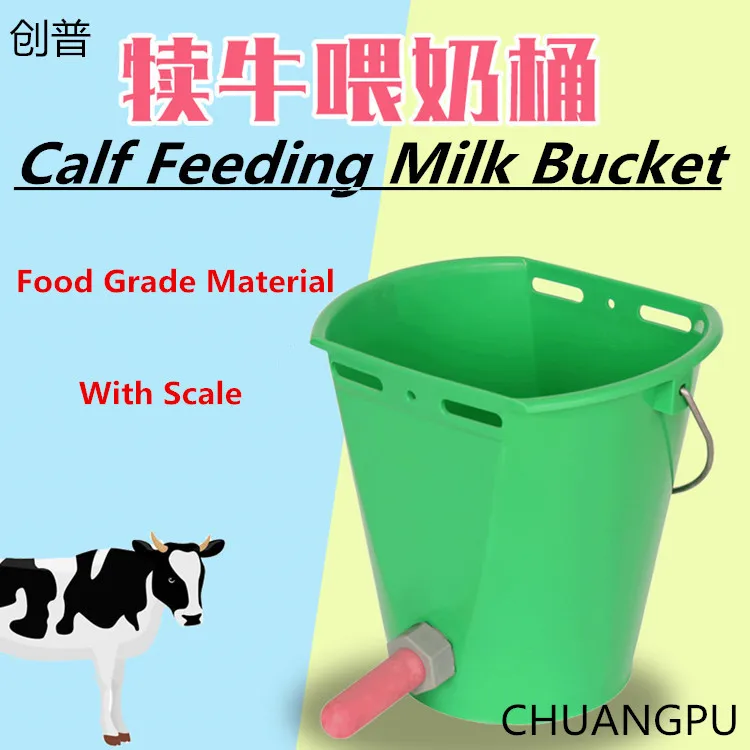 With higher water consumption associated with greater dry matter intake (DMI), the calves gained 0.2 pounds average daily gain, or 14%, more than calves with lower intakes. Similar findings came out of a comparison of the placement of water and grain pails. When the pails were separated physically or by a barrier there was a 33% increase in water consumed and an 18% improvement in body weight gain per day.
With higher water consumption associated with greater dry matter intake (DMI), the calves gained 0.2 pounds average daily gain, or 14%, more than calves with lower intakes. Similar findings came out of a comparison of the placement of water and grain pails. When the pails were separated physically or by a barrier there was a 33% increase in water consumed and an 18% improvement in body weight gain per day.
Table 2. Water impact on starter grain consumption
| Water Feeding Method Free Choice | No Water | |
|---|---|---|
| Number of calves | 20 | 21 |
| Calf starter grain intake (lbs) in first 4 weeks | 25.8 | 17.8 |
| Weight gain (lbs) in first 4 weeks | 18.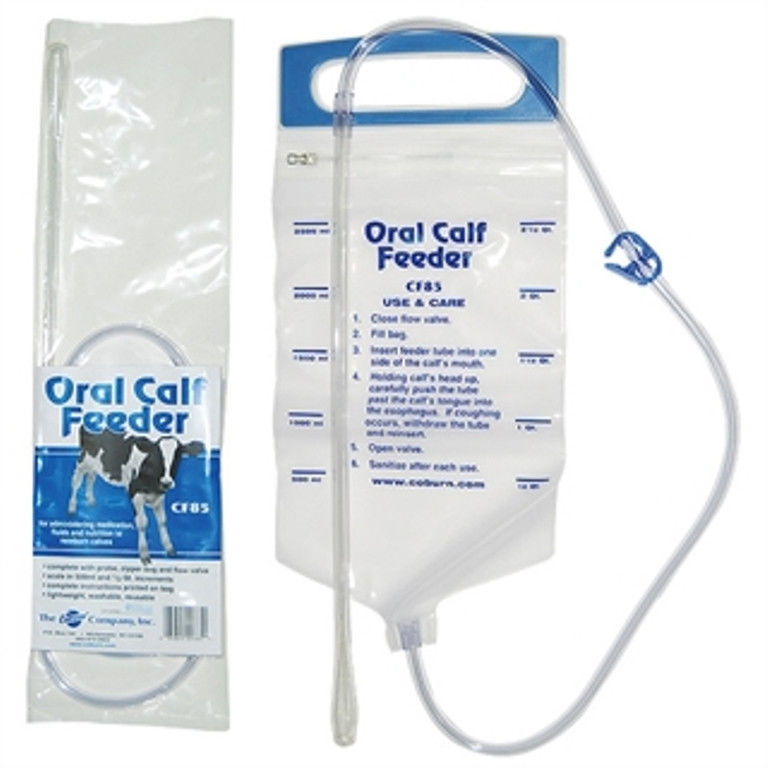 6 6 | 11.6 |
| Water consumed (quarts) in first 4 weeks | 47 | None |
Calves with free choice water consumed 45% more starter grain than the calves without water.
The biggest benefit to providing free choice water to preweaned calves is increased DMI. This translates into a higher rate of gain and indirectly to improved health. In Table 2, we see that calves with free choice water consumed 45% more starter grain than the calves without water.
These "free-choice water" calves also gained 60% more weight in the first four weeks. Estimates are that for efficient feed conversion, calves need to consume at least four pounds of water for each pound of DMI.
Practical summer tips
For summer management many farms keep an extra supply of water pails. A number equal to about 20% of calves on milk makes sense. Then each day of the week, one-fifth of the pails can be replaced with clean ones and the dirty ones can be scrubbed for the next day.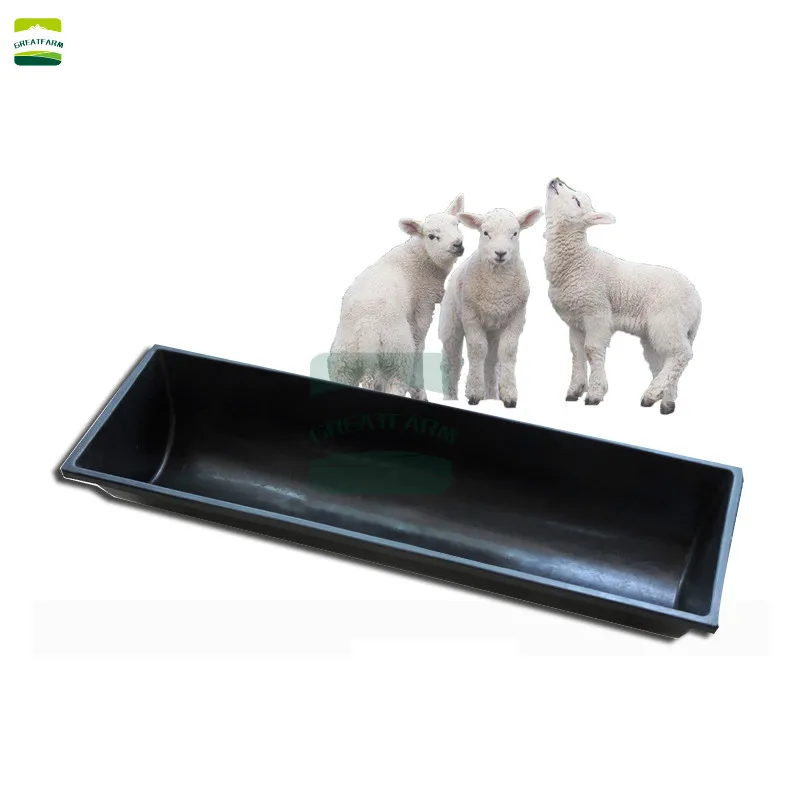 In five days all the pails have been cleaned. Algae and mold are controlled.
In five days all the pails have been cleaned. Algae and mold are controlled.
For calves in the weaning process or already weaned, water consumption in hot summer weather is often very high. Many will drink more than ten quarts daily. This may be a point where larger pails may be added to the hutches or pens. Some farms have a collection of 5-gallon pails that are clipped to the hutches or pens around weaning time. These larger pails permit once-a-day watering.
Does Water Make a Difference?
Calving Ease, June 2011
Scours
We all know that the biggest danger from scours is dehydration of the calf. Thus, we ask, “Will a scouring calf drink water?” That sounds like a cost effective way to keep sick calves hydrated.
Give them all the water they want and they will manage their hydration levels by themselves. As calf care persons we know that every generalization like the one above has conditions. When is it true? When is it false? So, when will calves effectively manage their own hydration needs by drinking water?
- They are familiar with the source of water; bottle, pail or waterer.

- Water is provided regularly and often enough so calves expect to find water. This what we call ad lib or free choice.
- Calves are not so ill that they are still active, alert and drinking their milk eagerly. I always had the best experience with this strategy feeding water to young calves that was close to body temperature (that is, close to 90 to 100°F). Many of my calves 5 to 15 days old when they had diarrhea would drink 3 to 4 times the small amount they normally drank. Just to be on the safe side I usually gave them a feeding of an electrolyte solution as well.
Calf starter grain consumption Water and calf starter grain intakes go together. Research done in the US showed a 45 percent difference in calf starter consumption in the first 4 weeks between calves with and without free choice water.
These calves were all fed the same milk replacer ration. Similar work in England traced water availability and calf starter grain intakes.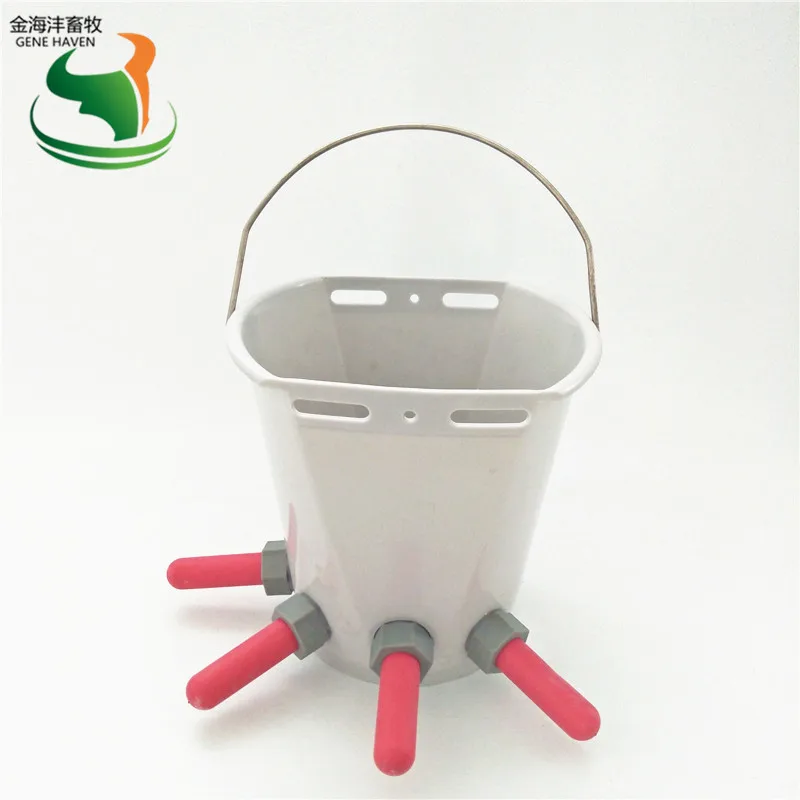 In addition this work compared two different milk replacer feeding rates. I had to estimate these milk replacer powder feeding rates from the data – about 0.8 pounds per day for the lower rate and 50 percent more, 1.2 pounds per day for the higher rate. For each feeding rate one-half of the calves either had free choice water or no water.
In addition this work compared two different milk replacer feeding rates. I had to estimate these milk replacer powder feeding rates from the data – about 0.8 pounds per day for the lower rate and 50 percent more, 1.2 pounds per day for the higher rate. For each feeding rate one-half of the calves either had free choice water or no water.
For both rations the difference in calf starter grain consumed to weaning was slightly over 1.5 times – that is, about 150 percent increase (22 pounds without water, 57 pounds with water). Conclusion?Availability of free choice water and higher levels of calf starter grain consumption go together.
Weight gains
The US research feeding free choice calf starter grain and water compared to calf starter grain without water had live weight gains in the first 4 weeks of 18.6 and 11.6 pounds respectively. Compare. Calves with free choice water ate more grain and gained 60 percent more compared to the calves with the same milk replacer ration but no water.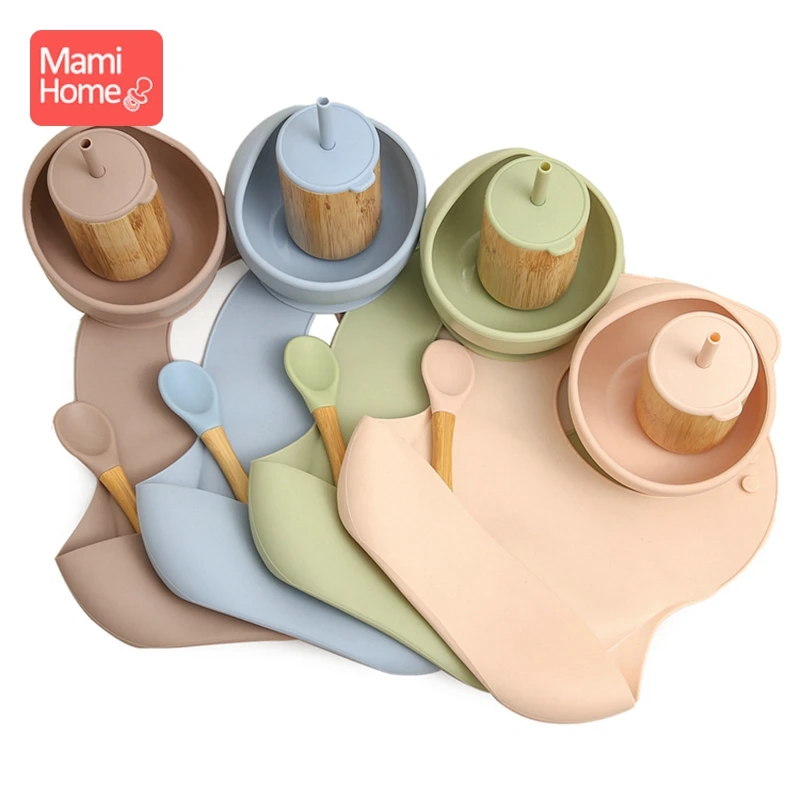 This was in the first four weeks. The UK research had two milk replacer feeding levels where the “water” and “no water” treatments were compared (average daily gain in pounds): Low milk replacer: no water = 0.7, water = 1.2 for a 67 percent increase with water. High milk replacer: no water = 0.9, water = 1.4 for a 51 percent increase with water.Conclusion? Availability of water and higher average daily weight gains go together. An additional benefit of the higher rates of gain may very well be stronger immunity and better overall health. Generally, when I find calf programs with growth rates below 1 pound a day when measured at 7 to 8 weeks of age I also find programs with significant health issues as well. Regardless of whether or not the low growth rates by themselves actually cause the undesirably high treatment rates for scours and pneumonia, the calves have low body condition and do not appear thrifty.
This was in the first four weeks. The UK research had two milk replacer feeding levels where the “water” and “no water” treatments were compared (average daily gain in pounds): Low milk replacer: no water = 0.7, water = 1.2 for a 67 percent increase with water. High milk replacer: no water = 0.9, water = 1.4 for a 51 percent increase with water.Conclusion? Availability of water and higher average daily weight gains go together. An additional benefit of the higher rates of gain may very well be stronger immunity and better overall health. Generally, when I find calf programs with growth rates below 1 pound a day when measured at 7 to 8 weeks of age I also find programs with significant health issues as well. Regardless of whether or not the low growth rates by themselves actually cause the undesirably high treatment rates for scours and pneumonia, the calves have low body condition and do not appear thrifty.
Summer water feeding needs
Compared to wintertime water consumption (often only 1 to 2 quarts daily) we anticipate summer intakes to be higher.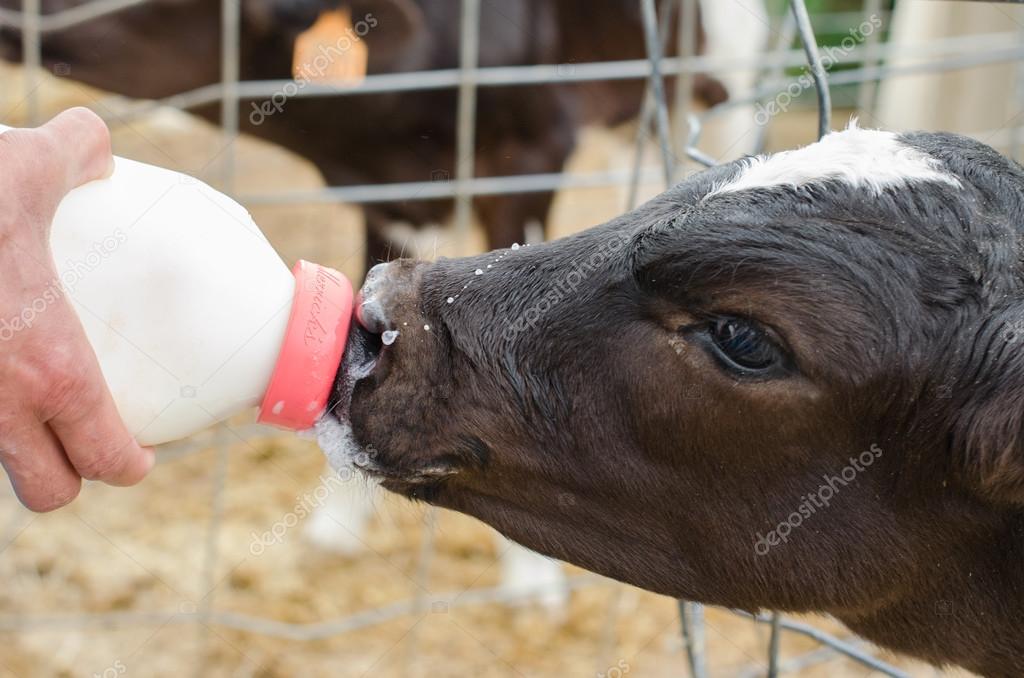 Average summertime drinking rates are around 2 to 3 quarts daily for large breed calves around 4 weeks old. Close to weaning around 6 or 7 weeks summer intakes bump up to double that amount and more. Once calves are weaned expect average consumption to double again. However, all the research seems to show that we should expect very wide differences among calves. Do not be alarmed by rates as low as 2 quarts a day and as high as 12 quarts daily.
Average summertime drinking rates are around 2 to 3 quarts daily for large breed calves around 4 weeks old. Close to weaning around 6 or 7 weeks summer intakes bump up to double that amount and more. Once calves are weaned expect average consumption to double again. However, all the research seems to show that we should expect very wide differences among calves. Do not be alarmed by rates as low as 2 quarts a day and as high as 12 quarts daily.
References: American Journal of Dairy Science 67:2964-2969. James Quigley, “Methods of feeding water” Calf Note #77 accessed May 20,2011 http://www.calfnotes.com/pdffiles/CN077.pdf
Feeding of calves in the initial period of life - Agrovesti.net
Feeding- 56913
Simex recommendations
Until birth, the calf is protected from the effects of microorganisms, temperature fluctuations, digestive disorders and other adverse factors.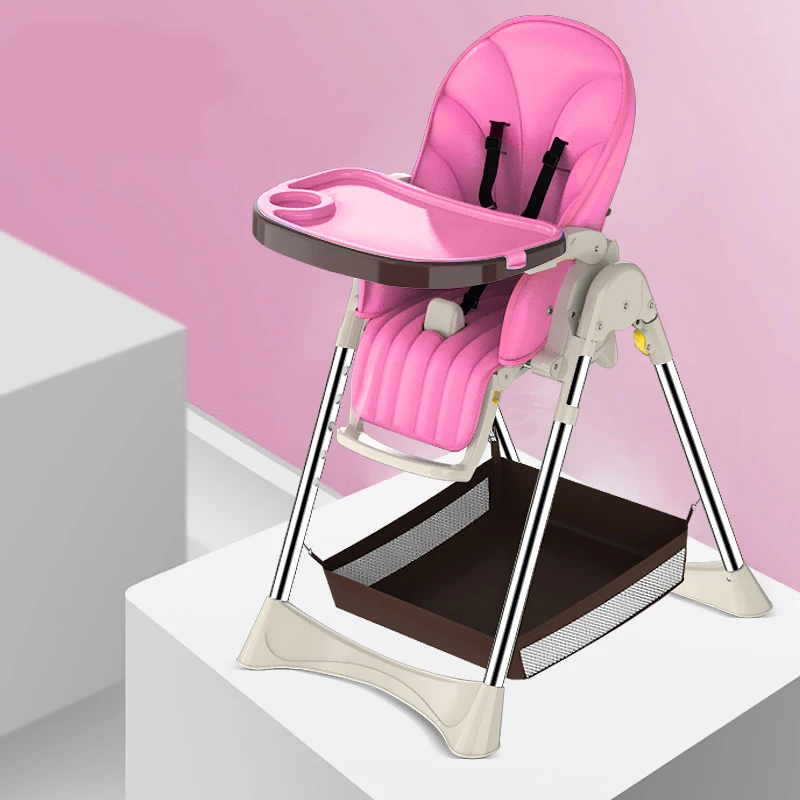 If a pregnant cow is fed according to the norms, it provides the body of the calf with a sufficient amount of proteins, carbohydrates, minerals, vitamins A, D, E, so that he gains 0.5 kg of weight daily in the last 30 days in the womb.
If a pregnant cow is fed according to the norms, it provides the body of the calf with a sufficient amount of proteins, carbohydrates, minerals, vitamins A, D, E, so that he gains 0.5 kg of weight daily in the last 30 days in the womb.
If a cow has been in the herd for 3 weeks before calving, she has antibodies in her blood that protect her from most of the diseases common on this farm. Unfortunately, in the bloodstream that nourishes the calf in the womb, these antibodies are filtered out and do not reach the embryo.
It is important for a calf to become immune to disease in a new environment. During the first 6 weeks of life, he is very susceptible to infections. Strengthening of immunity occurs during the first 4 months of life rather slowly; the calf acquires full natural immunity and becomes hardened only when it reaches 15 months of age.
Colostrum
Colostrum is the first milk from the cow after calving and is very important for the newborn calf. He needs to be fed 1 kg of colostrum as soon as possible (within the first 15 minutes of life) and also provide additional feedings for the next 24 hours.
He needs to be fed 1 kg of colostrum as soon as possible (within the first 15 minutes of life) and also provide additional feedings for the next 24 hours.
Colostrum contains large amounts of ready-made maternal antibodies and is the only way she can pass on her immunity to the calf to resist the many pathogens it will encounter during its first months of life. Since the calf's digestive tract is highly permeable immediately after birth, these antibodies and colostrum nutrients are rapidly absorbed and directly into the bloodstream. Subsequently, the intestinal walls become less permeable, and the rate of their assimilation decreases. That is why it is important to feed the calf with colostrum as early as possible. It contains 2 times more solids and energy, 100 times more vitamin A, 6 times more protein and 3 times more minerals than regular milk. It also contains enzymes that contribute to the chemical change in the intestinal environment necessary for the digestion of food. Colostrum flushes the digestive tract and thus inhibits the reproduction and movement of E.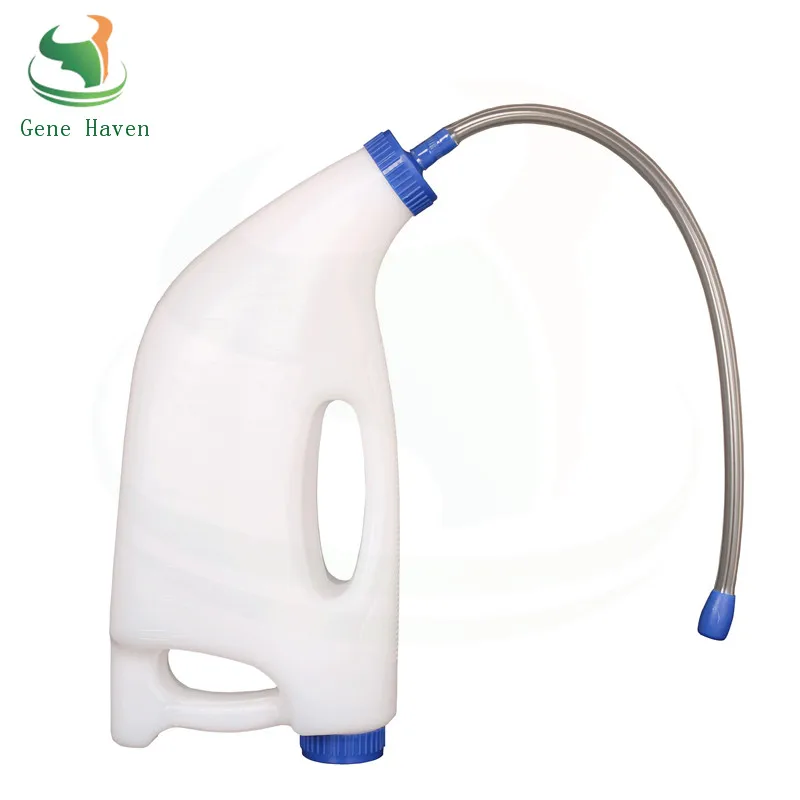 coli in the upper gastrointestinal tract and stomach. High levels of bacteria in these areas lead to early death of the calves.
coli in the upper gastrointestinal tract and stomach. High levels of bacteria in these areas lead to early death of the calves.
Surplus colostrum may be frozen in ice trays and stored in 1 kg portions. They are used for calves born from cows that have been milked (milked) within a few days before calving, as well as for calves from cows that have not been in the herd for 3 weeks.
Digestion
A calf's milk intake can be regulated by weaning it quickly from its mother. This reduces stress on the cow and also reduces the risk of harm to the calf.
A calf's small portions of milk, when it drinks it from a nipple (rather than from a bucket), stimulates its production of saliva. Increased saliva production in turn increases the production of enzymes needed to improve milk digestion. Thus, a large amount of milk fed to
A newborn calf has a 4-part stomach, although currently only one is functioning, the rennet Liquid food (milk ) enters directly into it through a tube formed by the occlusion of the esophageal trough.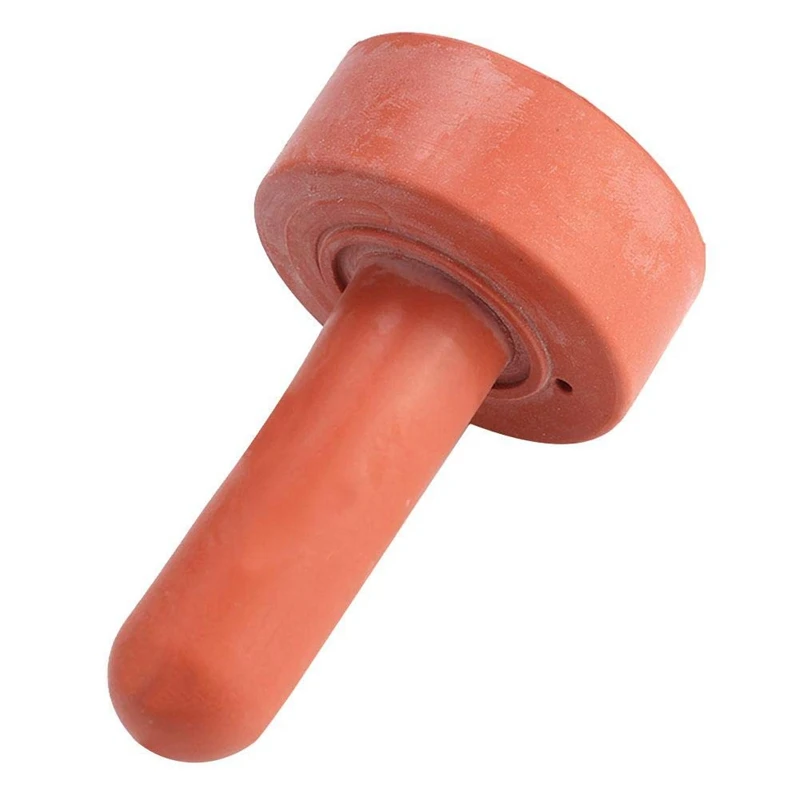 Its closure is stimulated by various stimuli (sucking, milk, water) and this reflex weakens as the calf grows.0013
Its closure is stimulated by various stimuli (sucking, milk, water) and this reflex weakens as the calf grows.0013
During the first 4 weeks of life, the only well-digestible nutrients a calf receives from liquid feeds are milk proteins, vegetable, milk and other animal fats, sugars (lactose and glucose), as well as minerals and vitamins.
Animal hygiene
The birth of a calf means its rapid adaptation to many environmental factors. During the first 2 weeks of his life, all efforts should be directed to facilitating this adaptation, and not to a rapid increase in body weight. The respiratory tract, digestive system, and umbilical cord remnants are highly susceptible to pathogens during the first hours of a calf's life. Thus, it is necessary to ensure maximum zoohygiene.
The calving site is the most likely location for a calf to become infected. Therefore, this place must be thoroughly cleaned and disinfected. If a calving site is causing health problems for the calves, another calving site must be found.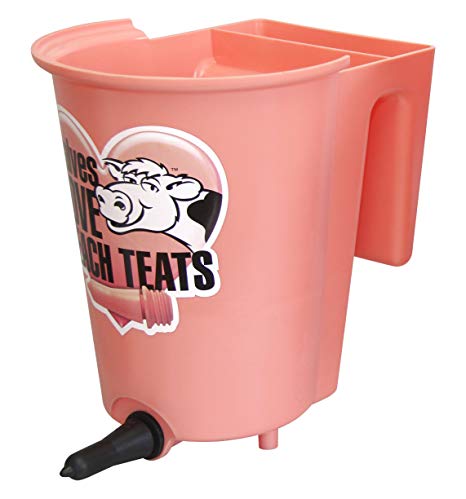 In summer, it may be a clean lawn (pasture), in winter it should be in a different room. In very cold weather, the calving area should be used for a maximum of 1 hour.
In summer, it may be a clean lawn (pasture), in winter it should be in a different room. In very cold weather, the calving area should be used for a maximum of 1 hour.
The cattleman must not only be present at the hotel, but also be near the calf and cow for several hours after it. It is forbidden to touch the calf without first washing your hands in a disinfectant solution. It is necessary to transfer the calf to a clean plastic sheet, and not to a litter. Clear the mouth and nostrils of mucus with a piece of clean cloth. Wipe the calf dry with a clean cloth, do not use feed bags and bedding sacks for this purpose.
The umbilical cord is exposed to microorganisms like an open wound. It is necessary to dip it in a 5% iodine solution, dry and cork.
Animal hygiene is especially important when feeding calves on a liquid diet (milk). Equipment for feeding milk to calves must be absolutely clean and disinfected before each feeding.
Care
The body of a newborn calf is not yet adapted to fluctuations in temperature and humidity.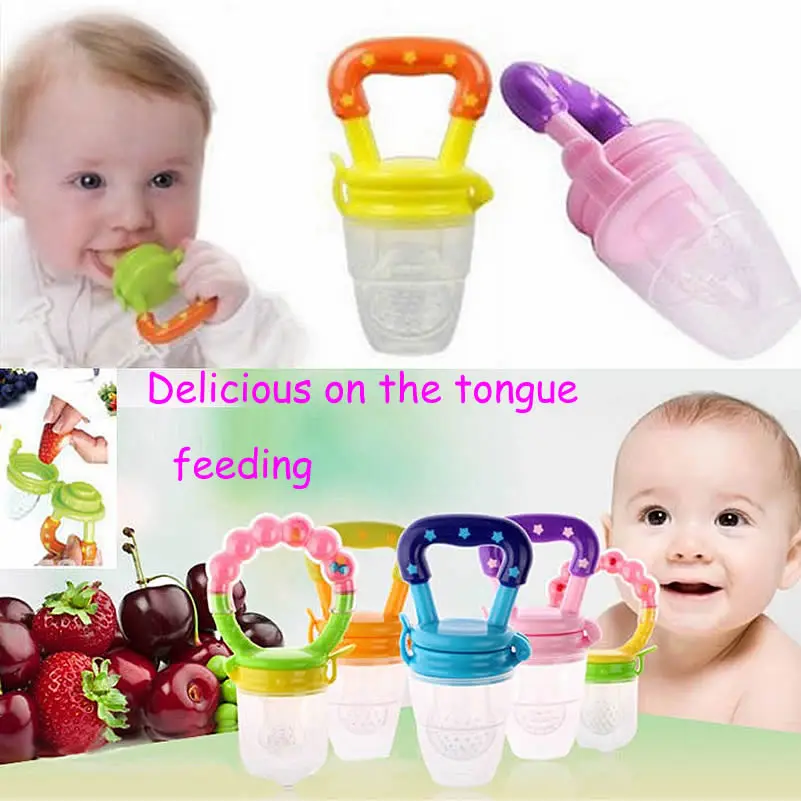 At this stage, the thermoregulation mechanism does not yet function properly. Therefore, hypothermia and overheating in the sun reduce the resistance of the calf's body and consume its vitality.
At this stage, the thermoregulation mechanism does not yet function properly. Therefore, hypothermia and overheating in the sun reduce the resistance of the calf's body and consume its vitality.
It is necessary to immediately transfer the calf to the dispensary, and in cold weather dry it under an infrared lamp. The dispensary should be located in a separate building or in a separate place on the farm itself. The dispensary should accommodate as few calves as possible in individual cages. It is very important that it has its own independent air supply system, providing continuous ventilation without drafts and significant temperature fluctuations.
The dispensary must create an environment that minimizes the possibility of entry into the lungs of calves of microorganisms that cause lung disease. By controlling air temperature and humidity, we help the villi of the respiratory tract trap (weed out) dust and moisture particles that contain microorganisms. In the dispensary, it is necessary to maintain an air temperature of 21 ° C with a high humidity of 80%.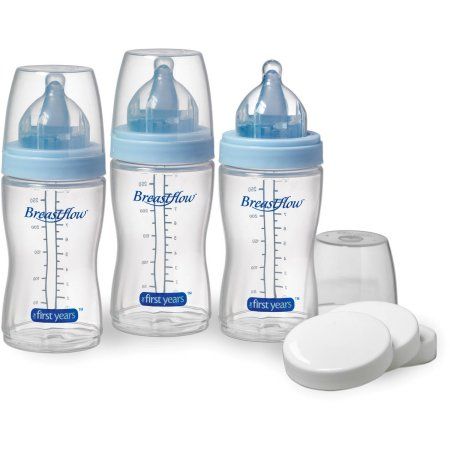 An air temperature of 10 ° C is satisfactory with low humidity.
An air temperature of 10 ° C is satisfactory with low humidity.
Very often, pneumonia in calves occurs as a result of or together with infectious diarrhea. The reasons for this are considered to be stress, as well as certain types of bacteria and viruses. Measures to prevent this are strict zoohygiene, as well as control of temperature, humidity and drafts. Cages should be regularly cleaned, disinfected and provided with clean straw or wood shavings. The dispensary should be considered a quarantine zone, to which only a few people who have taken the necessary measures to prevent the spread of infection have access.
Feeding
Feeding young calves with milk not only increases dry matter intake but also increases energy absorption. Feeding whole milk, whole milk replacer or a mixture of the two is a matter of personal preference, availability and economy.
Calves are born with a reserve of nutrients and may be slightly underfed for a short period after birth. Restricting the diet helps the calf adapt without straining its digestive system. This practice eliminates the risk of diet-induced diarrhea. Hungry calves soon learn to supplement the liquid ration with the nutrients of dry food and thus meet their nutrient requirements.
Restricting the diet helps the calf adapt without straining its digestive system. This practice eliminates the risk of diet-induced diarrhea. Hungry calves soon learn to supplement the liquid ration with the nutrients of dry food and thus meet their nutrient requirements.
The Calf Nutrient Requirements and Feed Intake charts below will help you plan your calf diets.
Table 1. needs for nutrients of milk chicks
| Live weight (kg) | Dry matter (kg) | Calcium (d) | phosphorus (G) | |
|---|---|---|---|---|
| 25 | 0.45 | 0.11 | 7 | 5 |
| 30 | 0.52 | 0.13 | 8 | 5 |
| 40 | 0.62 | 0.15 | 10 | 6 |
| 50 | 0.76 | 0.22 | 12 | 7 |
| 60 | 1.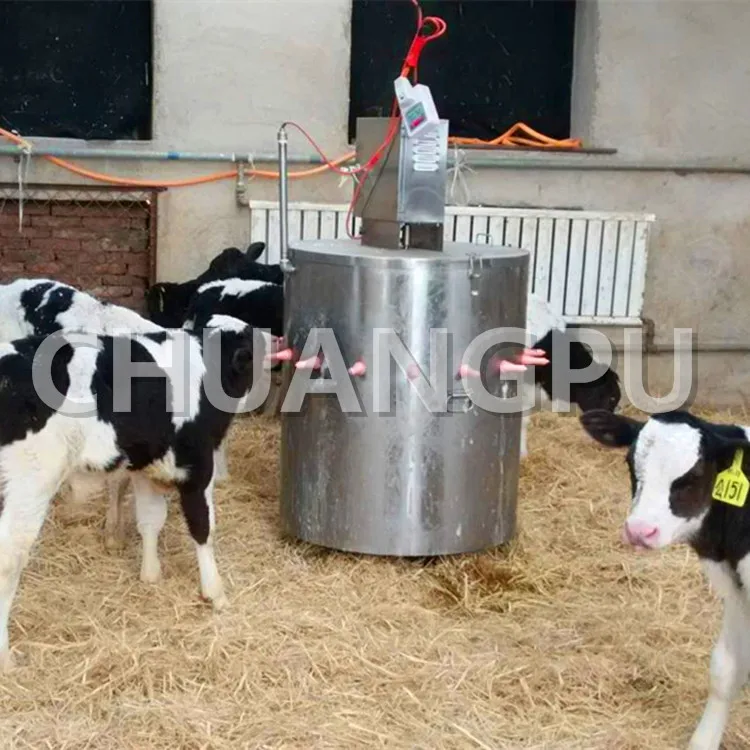 3 3 | 0.27 | 16 | 9 |
Whole milk
Whole milk is excellent for feeding calves. But its daily dacha should not exceed 8% of the calf's body weight. It is possible to grow Holstein calves, spending 75-100 kg of whole milk during the growing period.
Whole milk replacer
(CW) The use of milk replacer in feeding calves up to 4 weeks of age can be compared with the use of whole milk, however, calves lose some gloss and weight. High-quality milk replacer consists mainly of high-quality dairy products (skim milk powder, whey powder, buttermilk powder), as well as a small amount of grain. The stomach of calves before 2 weeks of age does not yet secrete enough enzymes to digest grain starch and large amounts of non-dairy proteins.
Due to the fact that the composition of milk replacer is complex, it is better to buy it than to cook it at home.
Factory-made milk replacer must contain at least 20% protein, 12% fat and no more than 0. 25% fiber. Products that are designed to replace milk but do not meet these standards are sold under a different brand name (not milk replacer).
25% fiber. Products that are designed to replace milk but do not meet these standards are sold under a different brand name (not milk replacer).
In practice, farmers prefer to use feed with a high energy content. So, for example, starter compound feed is often used instead of milk replacer. The starter must contain at least 15% fat and 20% crude protein. Adding high quality fat along with moderate feeding will increase energy intake and increase productivity without gastrointestinal distress. Minerals and vitamins are also important. In addition, some milk replacer contains an antidiarrheal antibiotic.
According to the USDA milk replacer feeding program, it is recommended to feed it twice a day, 250 g at a time, dissolved in 1 liter of water. This volume remains unchanged until the calf is weaned from milk at 3 weeks of age.
Some calves start eating dry starter as early as 7 days of age. By limiting whole milk or milk replacer, we are pushing the calf to starter intake.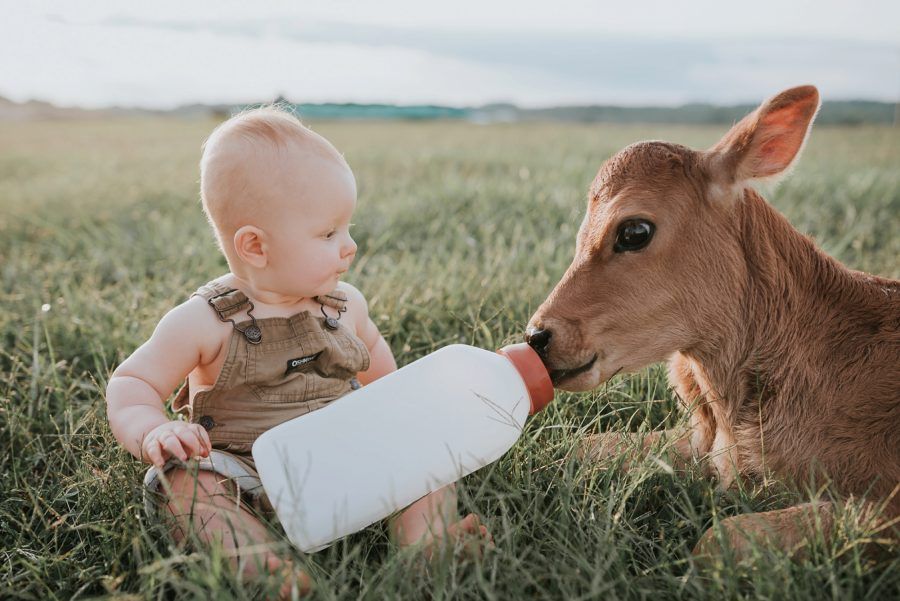 It is necessary to wean calves from milk either when they consume 0.5-0.7 kg of starter daily, or when their weight has reached 60 kg, or when they have reached the age of 28 days.
It is necessary to wean calves from milk either when they consume 0.5-0.7 kg of starter daily, or when their weight has reached 60 kg, or when they have reached the age of 28 days.
Cultured colostrum
Many farmers in Canada use cultured colostrum instead of whole milk or milk replacer. This allows you to significantly save feed and prevent the occurrence of diarrhea in calves.
To obtain fermented colostrum, it is necessary to store it from the first 6-8 milkings of a cow after calving and store it at room temperature. At the same time, the temperature in the room should not exceed 24 ° C and be not lower than 7 ° C. During fermentation, colostrum must be stirred 2 times a day. The presence of blood in colostrum is allowed, but if it is obtained from mastitis cows or contains antibiotics, then it cannot be used. It is necessary to transfer the calf to fermented colostrum gradually. The first time he is fed fresh colostrum from his mother. On the second feeding, he is given a mixture of mother's colostrum and fermented colostrum from previous milkings.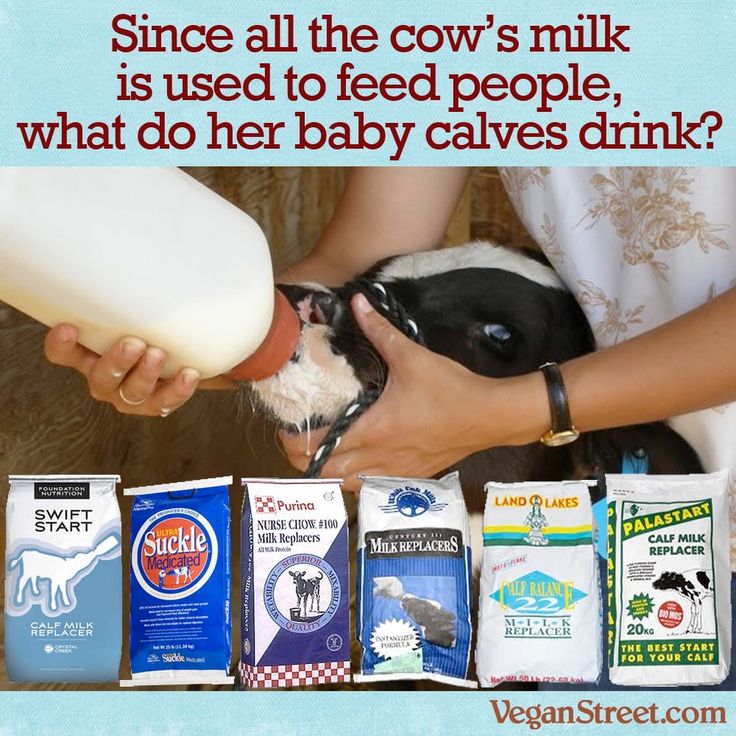 On the second day, the calf is given 1 kg of mixed colostrum diluted in 0.5 liters of warm water. On the third day, for feeding large calves, mix 1 liter of water with 1 kg of colostrum and give this amount 2 times a day until the calf is weaned from milk. Thus, for each calf, it is necessary to prepare 65-75 kg of fermented colostrum (feed it for 5-6 weeks).
On the second day, the calf is given 1 kg of mixed colostrum diluted in 0.5 liters of warm water. On the third day, for feeding large calves, mix 1 liter of water with 1 kg of colostrum and give this amount 2 times a day until the calf is weaned from milk. Thus, for each calf, it is necessary to prepare 65-75 kg of fermented colostrum (feed it for 5-6 weeks).
During the first week of life, calves should be fed a fresh, attractive coarse starter with at least 18-20% crude protein. In any feeding program, calves need to be encouraged to eat "starter" feeds earlier in life.
Diarrhea in calves
Diarrhea is the most common cause of death in young calves. Its causes are associated either with malnutrition or with bacteria. Calves die from exhaustion, dehydration and blood poisoning. Feeding-induced diarrhea occurs mainly as a result of overfeeding. Proper feeding of calves is a kind of art and therefore it is better to keep them slightly hungry and feed them in the same portions at a certain time (follow a certain daily routine). The volume of the stomach of a young calf is approximately 1 liter. At least 5 types of bacteria and about 100 strains of them, as well as toxins from their vital activity, can cause infectious diarrhea in calves. Individual buckets and drinkers thoroughly washed and disinfected between feedings, nipples, as well as clean and dry cages will help prevent this disease. Dehydration caused by severe diarrhea disturbs the balance of substances in the body of the calf and is the main cause of death. Physiological solutions to replace lost fluids can be purchased from a veterinarian.
The volume of the stomach of a young calf is approximately 1 liter. At least 5 types of bacteria and about 100 strains of them, as well as toxins from their vital activity, can cause infectious diarrhea in calves. Individual buckets and drinkers thoroughly washed and disinfected between feedings, nipples, as well as clean and dry cages will help prevent this disease. Dehydration caused by severe diarrhea disturbs the balance of substances in the body of the calf and is the main cause of death. Physiological solutions to replace lost fluids can be purchased from a veterinarian.
Vaccines have also been developed to prevent infectious diarrhea in calves.
Vitamins
The calf should be getting enough vitamins from colostrum by the time it is fed a grain diet. But for additional protection, especially during the last two winter months, it is recommended at birth to make an injection of 1 million IU vit. A, 150 thousand IE vit. D and 100 IU vit. E.
Calf grain ration
Early weaning of the calf from its mother reduces feed and labor costs and reduces the risk of feeding-induced diarrhea.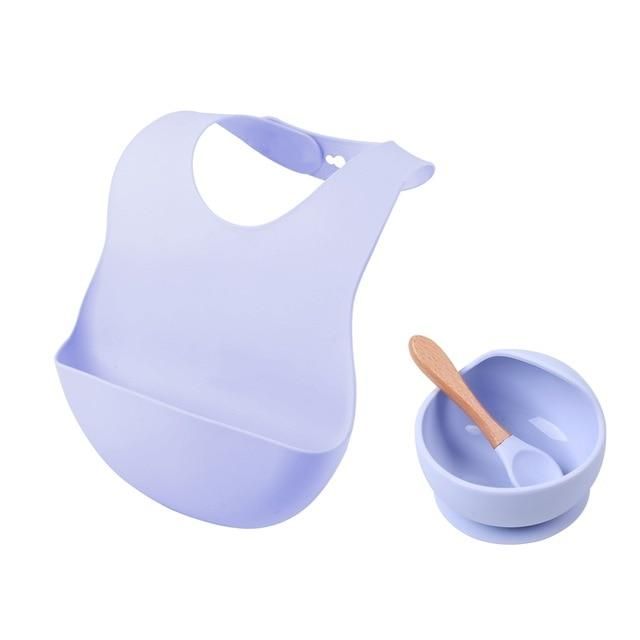 Large, healthy calves can be weaned at 3 weeks of age, most of the rest at 4 weeks of age. The main thing to consider with early weaning is that the calf's liquid diet should be limited so that he can switch to dry food as soon as possible. The current trend towards early weaning, rapid growth and early transition to pasture highlights the importance of a quality starter for calves. The starter should be fresh, eatable, and meet the following nutrient levels: 20% protein, 70% TDN, and a 2 to 1 ratio of calcium to phosphorus. % calcium phosphate, 1% mineralized salt and a vitamin mixture of 2000 units of vitamin A and 300 units of vitamin D for each kilogram of grain mixture.
Large, healthy calves can be weaned at 3 weeks of age, most of the rest at 4 weeks of age. The main thing to consider with early weaning is that the calf's liquid diet should be limited so that he can switch to dry food as soon as possible. The current trend towards early weaning, rapid growth and early transition to pasture highlights the importance of a quality starter for calves. The starter should be fresh, eatable, and meet the following nutrient levels: 20% protein, 70% TDN, and a 2 to 1 ratio of calcium to phosphorus. % calcium phosphate, 1% mineralized salt and a vitamin mixture of 2000 units of vitamin A and 300 units of vitamin D for each kilogram of grain mixture.
If small quantities of starter are needed, it is usually advisable to purchase a factory made starter. Its advantages are freshness, palatability and variety.
Due to the high content and digestibility of protein and energy in starter feed, it is advisable not to feed the calf hay until it is accustomed to grain feed.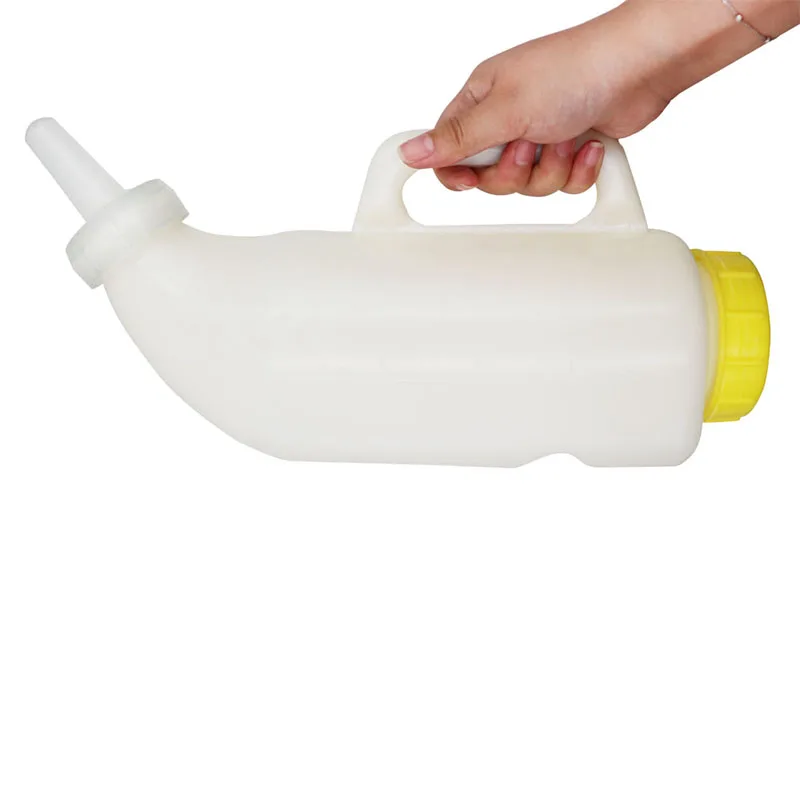 There is no real benefit to feeding calves under 3 weeks old with hay. The acceptable level of average daily live weight gain at the age of up to 7 weeks is 500 g. The unwritten rule for weaning a calf from milk is the moment when he consumes 0.5 - 0.7 kg of starter feed per day. Its amount will increase sharply after weaning the calf from milk, when he will be offered a free choice. The daily amount of starter fed to calves may be limited to 2 kg.
There is no real benefit to feeding calves under 3 weeks old with hay. The acceptable level of average daily live weight gain at the age of up to 7 weeks is 500 g. The unwritten rule for weaning a calf from milk is the moment when he consumes 0.5 - 0.7 kg of starter feed per day. Its amount will increase sharply after weaning the calf from milk, when he will be offered a free choice. The daily amount of starter fed to calves may be limited to 2 kg.
When raising bulls for fattening, the height of the calves at the withers should be given as much attention as weight gain. A study has shown that it is recommended to feed calves up to six months of age with a 20% protein starter. At this stage, the daily ration will be 2 kg of grain ration, free access to water, minerals and high quality first cut chopped hay.
Feeding patterns for dairy heifers fed rations that included corn silage, grass-bean silage, grazing, and second-cut hay indicated that, on average, the rumen was not sufficiently developed in terms of the capacity and efficiency of consumption of these feeds in up to six months of age.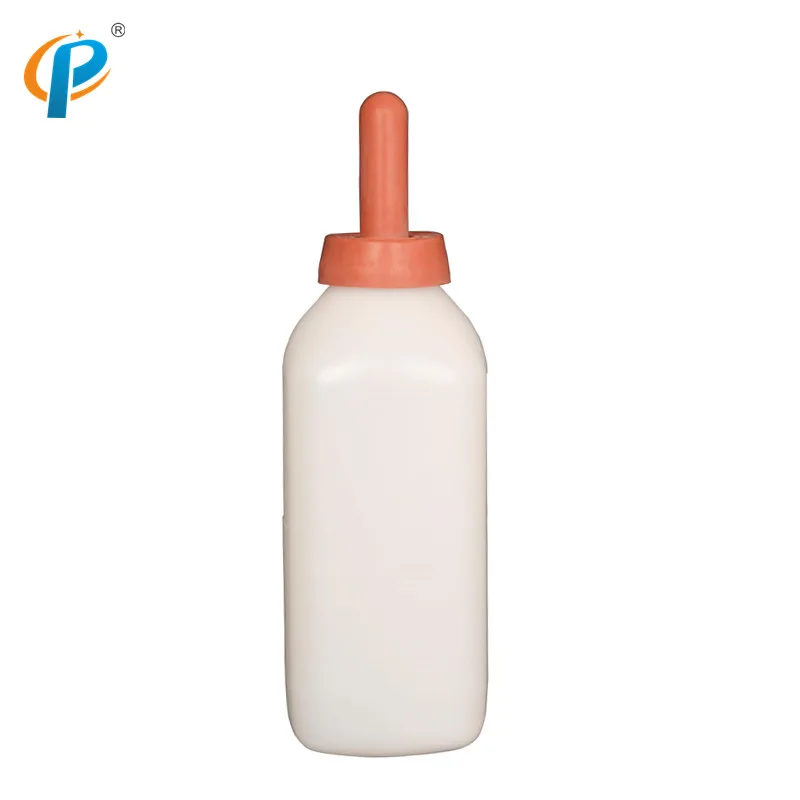
Water
Water is given to calves from 7-10 days of age. At first, a small amount is regularly given, then as the calves begin to consume more dry food, the amount of water is increased. Water must be fresh and drinkers must be kept clean.
Cold calf housing
In Canada, calves are mainly reared in cold housing. Such housing provides a proper environment if it has good drainage, the room is open to the south and the cages are profusely lined with straw or shavings. It is not recommended to use sawdust, as calves eat it to a greater extent than other types of bedding.
At temperatures below 0C, calves may suffer from lack of energy and lack of fluids. In this case, he may die due to malnutrition and dehydration.
When kept cold, it is desirable to increase the milk intake by 25% in winter. To prevent diarrhea, it is necessary to divide the daily feed supply by 3 times, and not by 2. It is also desirable to give calves milk heated to body temperature (38. 5 ° C). Once a day, calves should be given warm water and always given plenty of high-quality starter. It is necessary to try to accustom calves to consume starter from 3 days of age. This will help save the calf's life if for some reason (cold snap) the calves' need for nutrients increases dramatically.
5 ° C). Once a day, calves should be given warm water and always given plenty of high-quality starter. It is necessary to try to accustom calves to consume starter from 3 days of age. This will help save the calf's life if for some reason (cold snap) the calves' need for nutrients increases dramatically.
Health
Raising healthy calves is the main problem of dairy cattle breeding. One out of every five calves either dies of disease or becomes seriously ill during the rearing period.
Factors that predispose calves to diseases are poor housing, poor quality feeding and inadequate animal hygiene. Proper care, attention to each calf, and individual cages are more important to raising a healthy calf than syringes and medicines.
Table 2 Recommended diets for calves
| Type of feed | No. 1 | No. 2 | No. 3 | No. 4 | No. 5No. 7 | ||
|---|---|---|---|---|---|---|---|
| CURINE OF CURNED POLYULAS | 308 | 300 | 250 | 270 | 300 | 300 | 400 |
| Rolled or coarse oats | 200 | 200 | 200 | 200 | 170 | 300 | 250 |
| Soy flour (44% protein) | 200 | 200 | 200 | 300 | 200 | 125 | 240 |
| Flaxseed meal | 100 | 100 | 100 | - | 100 | 100 | - |
| Dried corn vinasse | - | 100 | 100 | - | - | - | - |
| Wheat bran | 100 | - | - | 100 | 100 | 100 | - |
| Feed molasses | 50 | 50 | 100 | 100 | 100 | 50 | 80 |
| Chalk | 15 | 15 | 15 | - | 10 | 15 | - |
| Mineral additive | 15 | 23 | 23 | - | 10 | 20 | - |
| Dicalcium phosphate | - | - | - | 20 | - | - | 20 |
| Magnesium oxide | 2 | 2 | 2 | - | - | - | - |
| Iodized salt | 8 | 8 | 8 | - | 10 | 8 | - |
| Salt | - | - | - | 10 | - | - | 10 |
| Vitamins A, D, E | 2 | 2 | 2 | - | - | 2 | - |
| % protein | 18.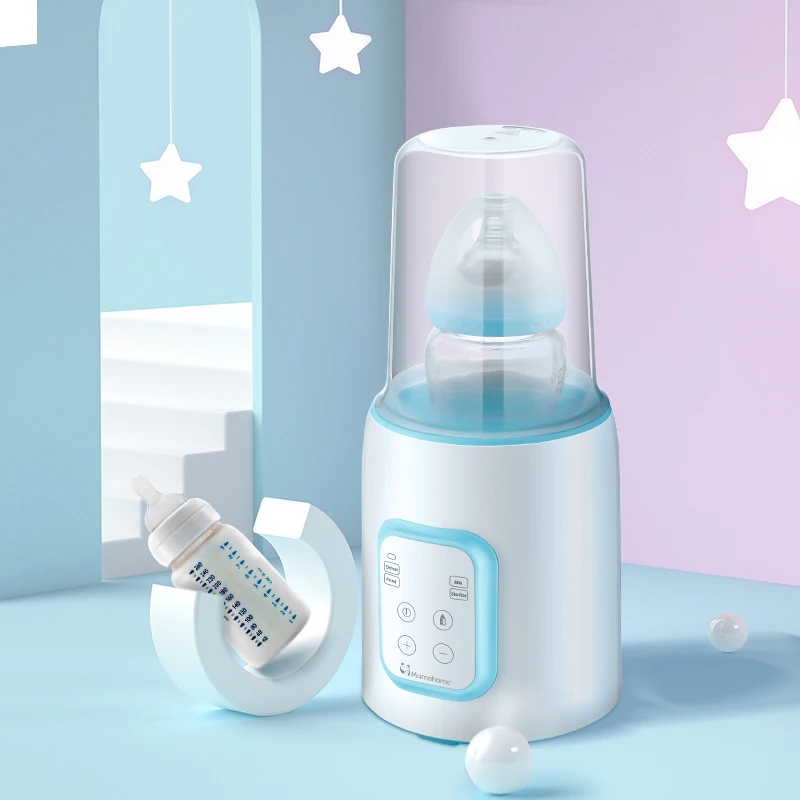 5 5 | 19.7 | 19.5 | 19.3 | 18.1 | 16 | 17 |
| % calcium | 0.97 | 1.08 | 1.12 | 0.7 | 0.75 | 1.02 | 0.68 |
| % Phosphorus | 0.64 | 0.66 | 0.68 | 0.78 | 0.57 | 0.71 | 0.68 |
Share
Tags
Technology Feeding
- Previous article Feed for pigs: nutrition and ingredients
- Next article Comments on pig rations
Calf Watering Station - Calf Development - Calm
For optimal growth from calf to dairy cow
Share this page on Facebook , Twitter , LinkedIn
Benefits
Shorter growing period
Unlimited access to freshly prepared milk in the first 35 days of life pays off.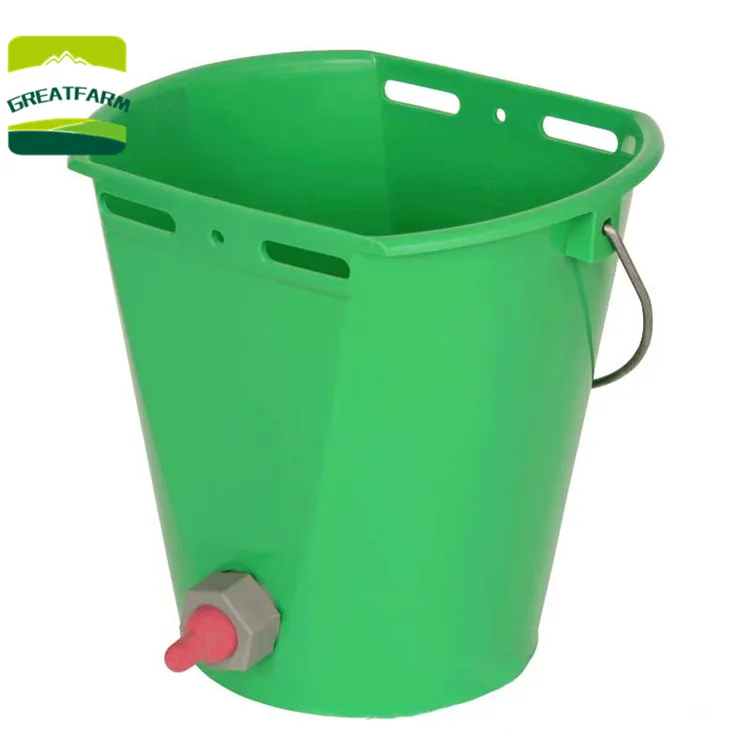 Gradually reducing the amount of milk to zero over the next 35 days stimulates the consumption of roughage and concentrates. This contributes to the correct development of the rumen of the animal and has a positive effect on its viability, and subsequently on the reproductive ability, milk yield and life expectancy of the cow.
Gradually reducing the amount of milk to zero over the next 35 days stimulates the consumption of roughage and concentrates. This contributes to the correct development of the rumen of the animal and has a positive effect on its viability, and subsequently on the reproductive ability, milk yield and life expectancy of the cow.
More about raising calves
Optimum Hygiene
TheHygieneBox guarantees optimum teat hygiene through a thorough and fully automated 2-step cleaning process. First, the nipple is cleaned with clean water each time the calf has drunk milk. Then the inside of the system is cleaned with water and 1 or 2 detergents. In addition, YelloTeat, made of hygienic material, has a high dirt repellency. Optimal hygiene for healthy calves.
More about optimal hygiene
Ease of use
No more manually feeding calves, filling and lifting heavy buckets. You don't need to wash your feeding equipment every day. Lely Calm takes care of the feeding of the calves and ensures optimal hygiene. Automated feeding saves time and your calves can enjoy freshly prepared milk from the optimum hygienic dispenser.
Lely Calm takes care of the feeding of the calves and ensures optimal hygiene. Automated feeding saves time and your calves can enjoy freshly prepared milk from the optimum hygienic dispenser.
Always under control
TheLely Calm is equipped with an intelligent control system: the main source of information about the health of your calves. Data can be accessed through practical tools such as our Horizon management system, CalfApp and CalfCloud. Your new assistants who will tell you when to take immediate action in case of deviations in the drinking behavior of calves.
Error loading the form
An error occurred loading the form. This can be caused by content blocking features of your browser or network.
Thank you!
You can download the file using the following download button
Download the PDF
Contact your local dealer for advice
Performance
An investment that pays off quickly
Contact your local dealer for advice
* Here are the averages of our customers
3 hours
reduction in labor costs per calf (per 100 calves)
Contact your local dealer for advice
* Here are the averages of our customers
Excellent Service
Do you have questions about finances? We will be happy to help and advise you.
Find out more about Lely Finance
Once your barn equipment is running, we are here to help you optimize its performance.
Learn more about Farm Management Support
Lely Calm works well with
Lely Astronaut
Natural milking
Increasing milk production and access to information reports anytime, anywhere - all this is possible thanks to automated milking. The milking system collects data on milk production and the health of each cow. You receive early warnings of any changes, allowing you to focus on the cows that need it most.
Find out more about the Lely Astronaut
Lely Vector
Flexible fresh feed supply
Get the most out of your feeding strategy by feeding your cows fresh and well-mixed rations several times a day. No additional time costs. The Lely Vector minimizes effort, feed and fuel costs, and delivers the fresh feed your cows need to be healthy and productive.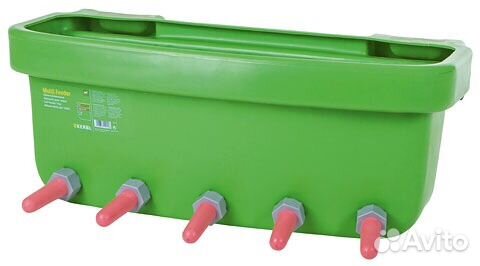
Lely Light for Cows
Increasing milk yield with optimal barn lighting
Optimal barn lighting helps increase milk production. The Lely Light for Cows (L4C) lighting system allows you to set up an efficient lighting scheme that will work automatically. In this way, you can always ensure the required amount and intensity of light in the barn. It also has a positive effect on the growth and fertility of young cattle.
More about L4C
Lely Horizon
Making the right decisions based on the right information
Quickly make the right decisions to improve your company's performance based on valuable real-time data. The Lely Horizon management system collects data from barns and converts it into useful information about work processes and cow health. This allows, if necessary, to adjust certain indicators.
Find out more about the Lely Horizon
Lely Cosmix
Feeding station for cows that deserve more
Better milk quality, a healthier rumen and more efficient feeding - all of this can be achieved with the Lely Cosmix.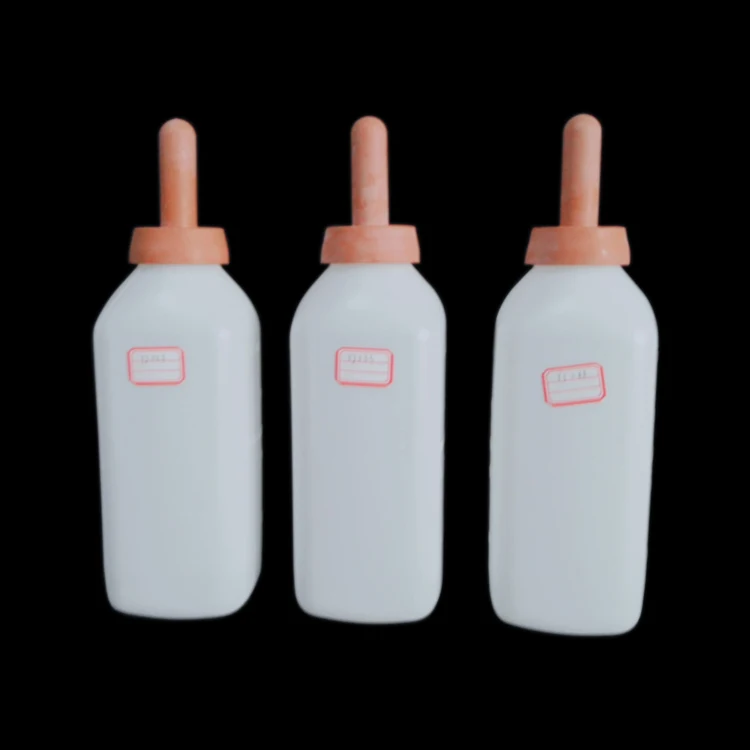 Each cow receives the portion of feed concentrate that she needs. The Lely Horizon control system collects valuable data on feed concentrate consumption. Thanks to this, you will be able to get the most out of your feeding strategy.
Each cow receives the portion of feed concentrate that she needs. The Lely Horizon control system collects valuable data on feed concentrate consumption. Thanks to this, you will be able to get the most out of your feeding strategy.
Find out more about Lely Cosmix
Maintenance products
For perfect hygiene and high milk quality
Lely Consumables is a quick and easy way to get the cleaning and maintenance products you need to keep your equipment clean and efficient, a hygienic barn environment and proper cow care. You can also purchase original wear parts for our barn tools.
Find out more about Lely Consumables
Feeding
Efficient feeding has a positive effect on cow health and milk yield. Proper mixing of portions with the correct content of ingredients and their timely delivery requires special knowledge, experience and time.